Hello Fellow Amazing Steemians! Today, I'm going to give you a tour to the famous prison in Hanoi. I threw a little bit about its history so enjoy reading and also enjoy the photos!
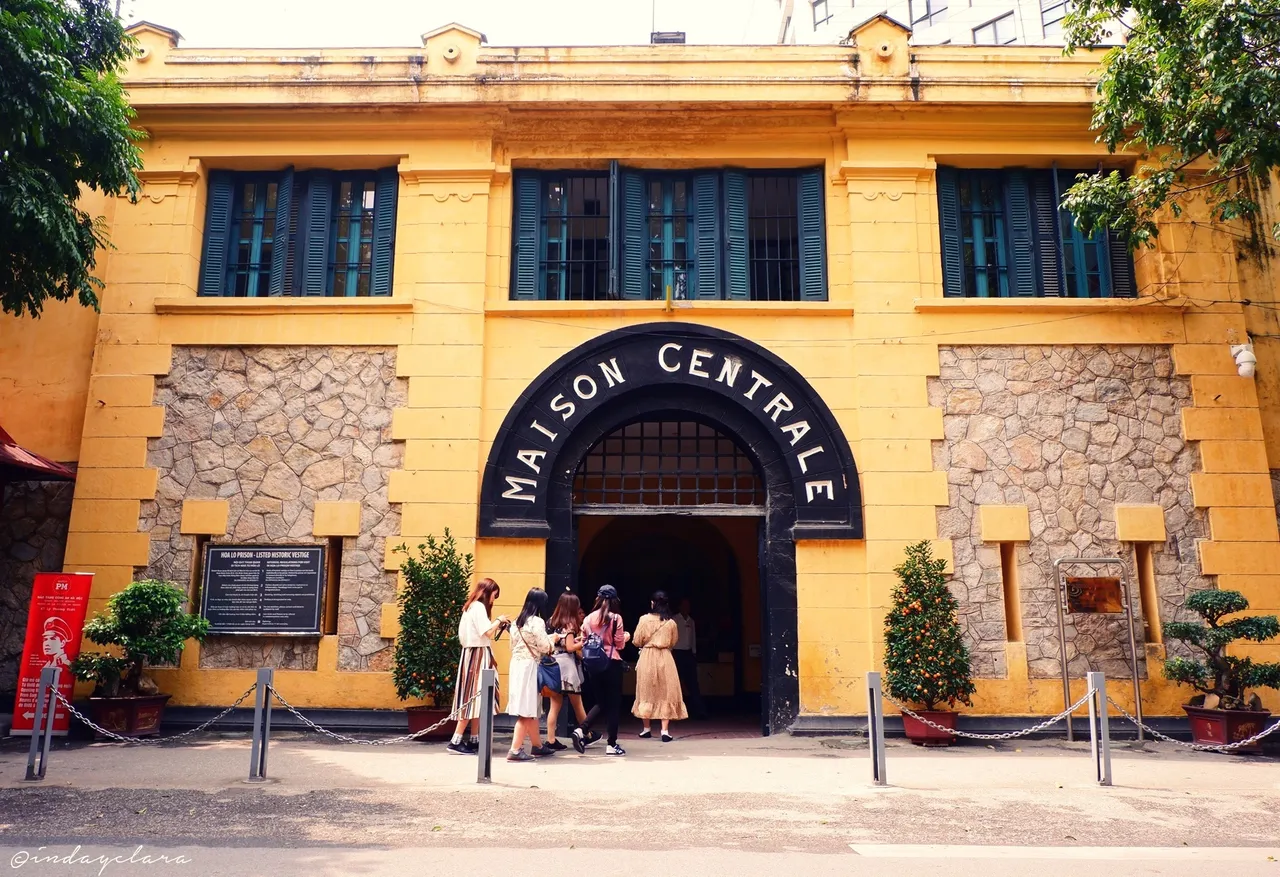
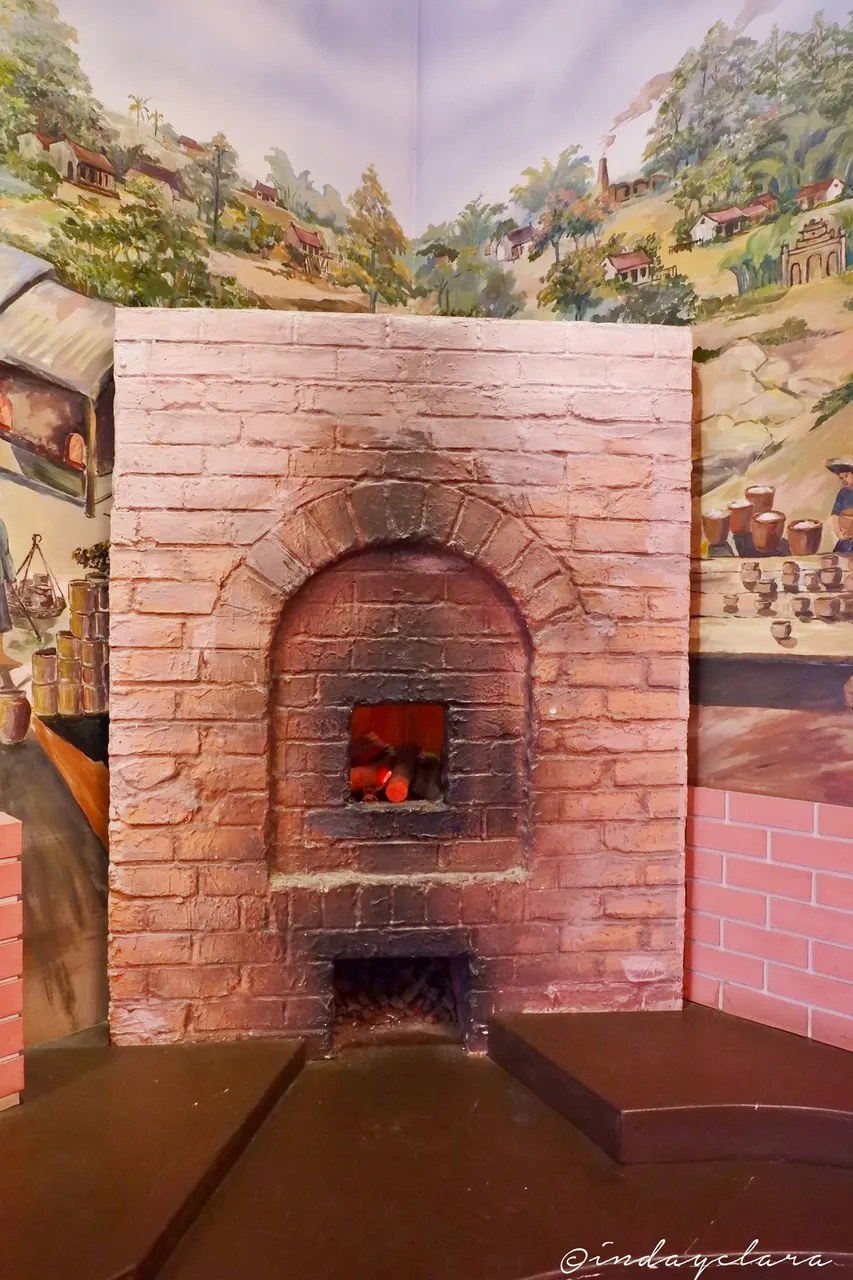
This prison was built in 1896 in Phu Khanh village, Viinh Xuong Canton, Tho Xuong district, Hanoi. And is considered as one of the biggest prison built by the French Colony in Indochina. This was a prison for Vietnamese political prisoners during the French era then later became a prison for American Soldiers during the Vietnam War. The Americans referred the place as “Hanoi Hilton”. The prison was torn down during the 1900’s and what was left was turned into a museum.
Hỏa Lò when translated means “fiery furnace”, “Hell’s hole” or “Stove”. The name originated from stores selling wood or coal-fire stoves along the streets during the pre-colonial times.
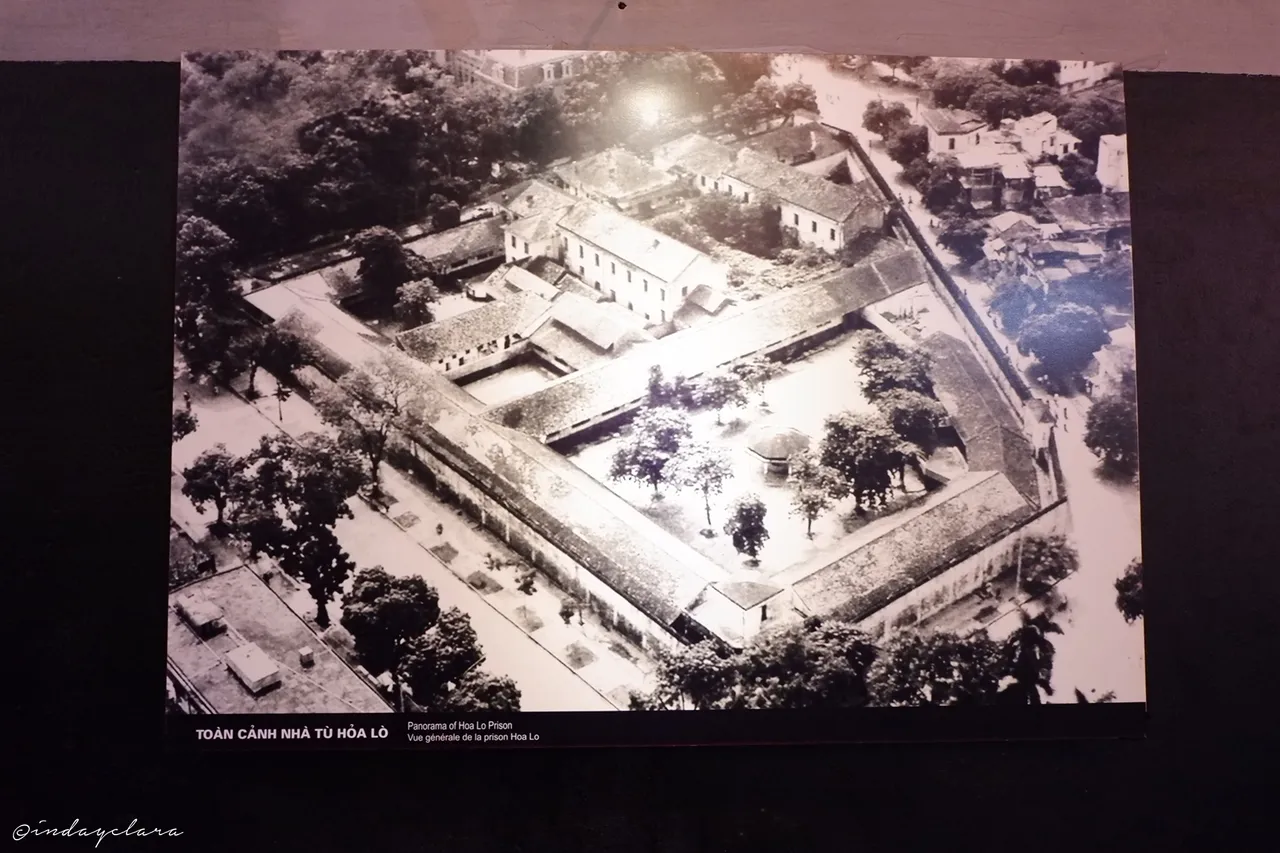
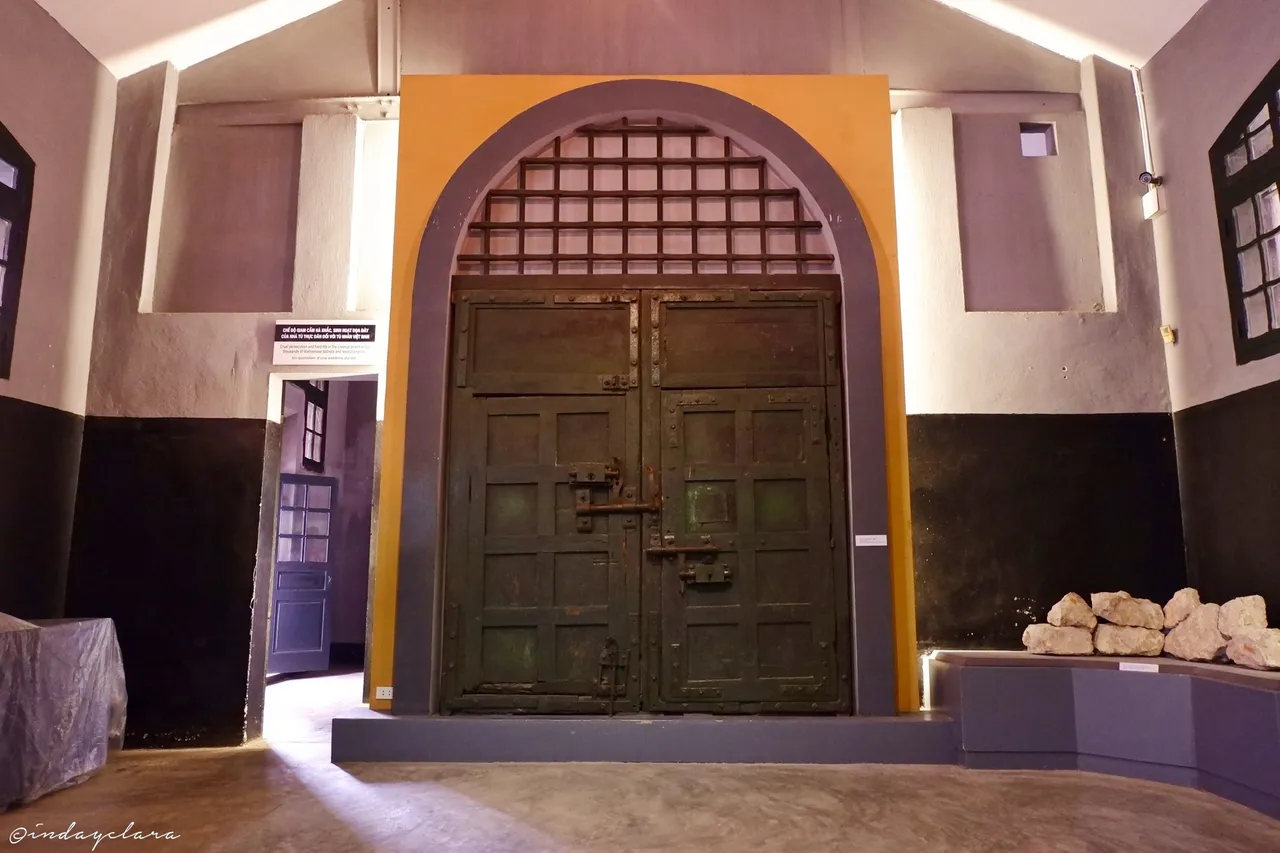
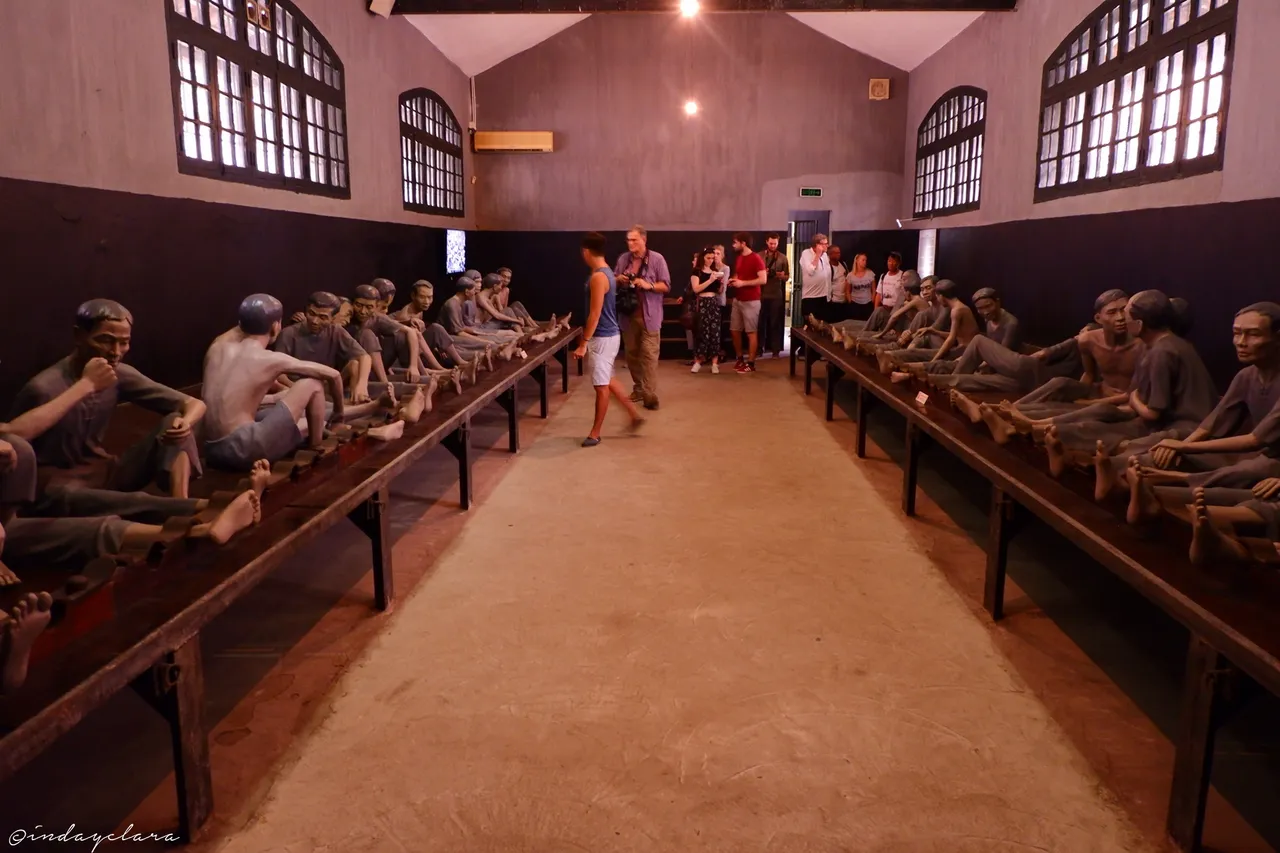
Living in the imperialistic prison while receiving severe punishment and leading maltreated lives, revolutionary patriot soldiers kept steady their sense of purpose as they turned the prison into a school to propagate the revolutionary argument. Many soldiers escaped from the prison and returned to their organizations to make appropriate contributions to the liberation of the motherland.
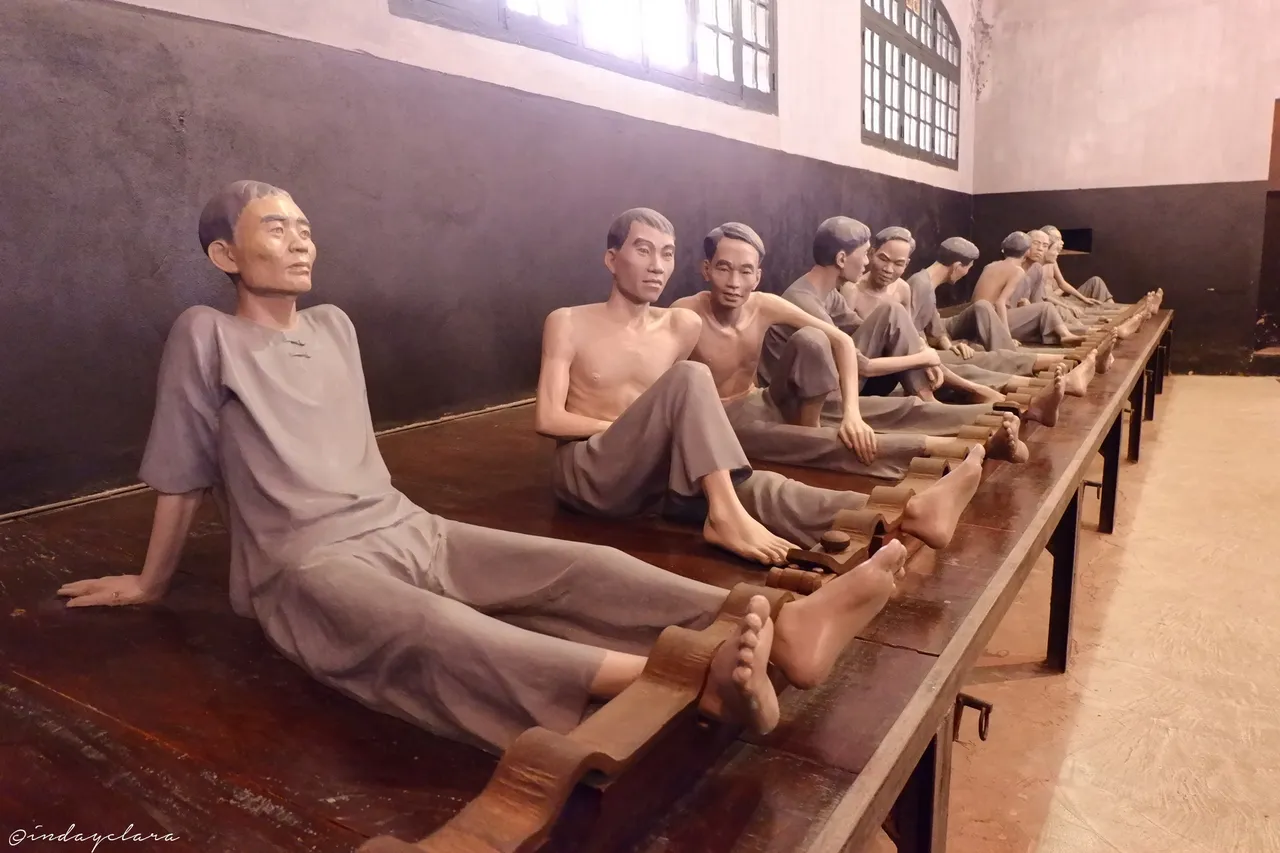
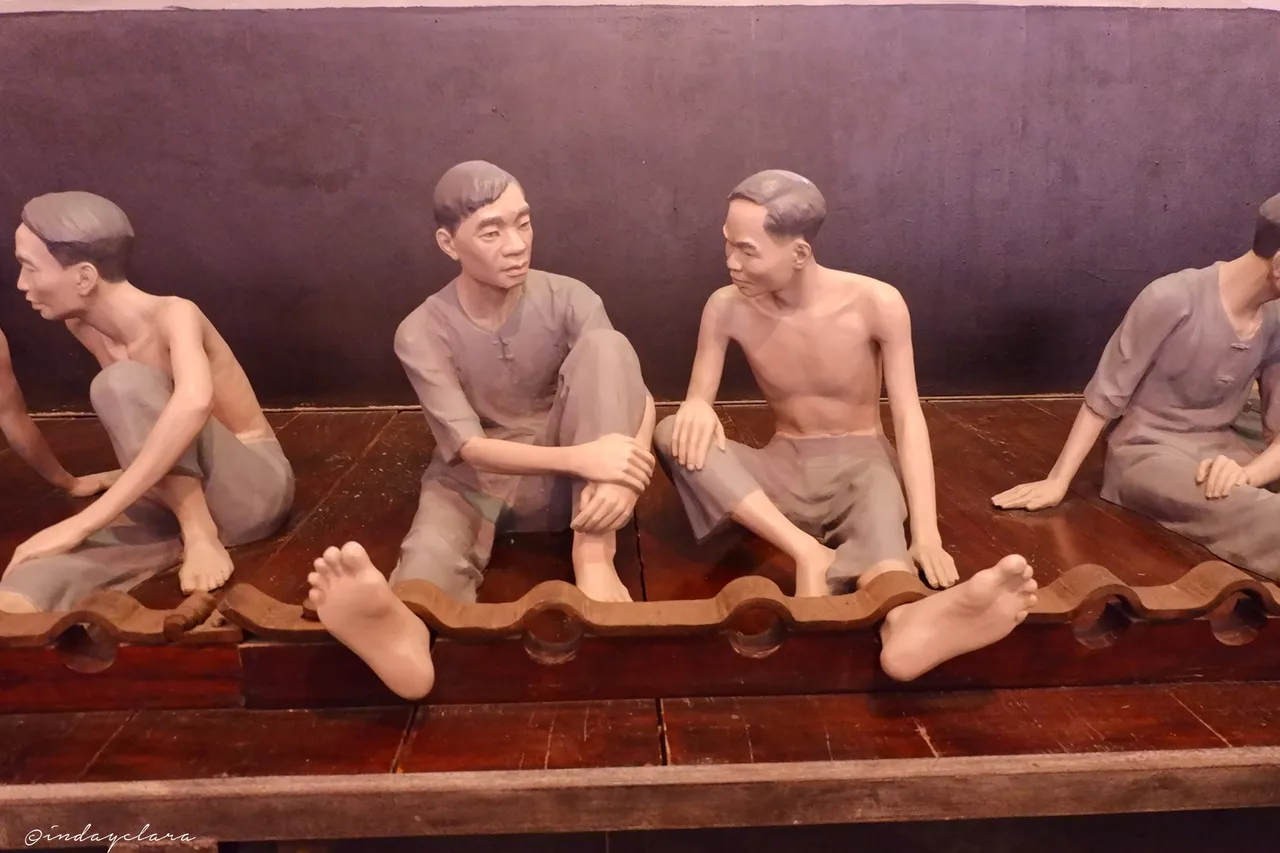
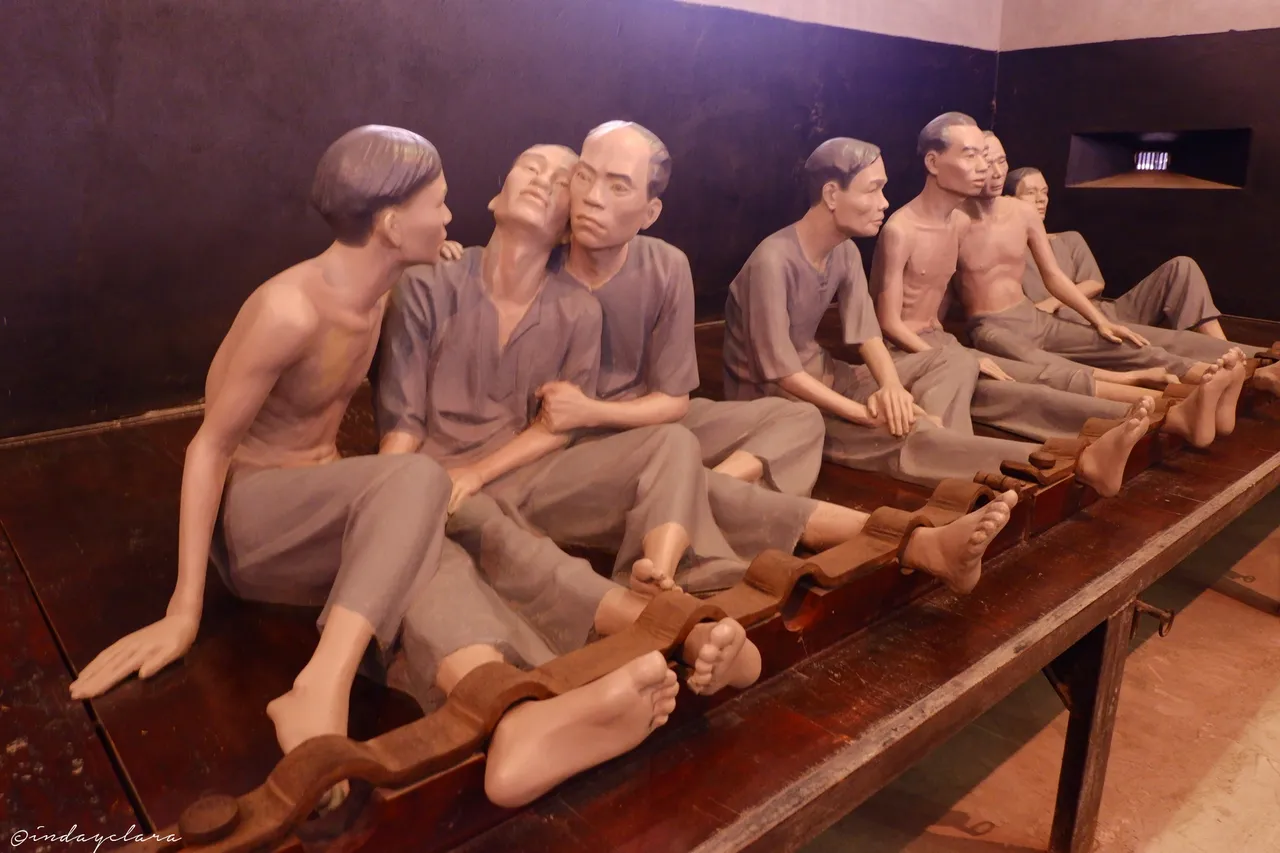
In 1993, in order to meet the cultural developmental needs of the Capital, the Vietnamese Government decided to change the main aim of this prison. The south-east part of the prison was kept, embellished and classified as a revolutionary relic of Hanoi. Here they erected a monumentin tribute to the revolutionary patriotic soldiers who heroically lay down their lives in Hoa Lo prison for the independence and freedom of the nation.
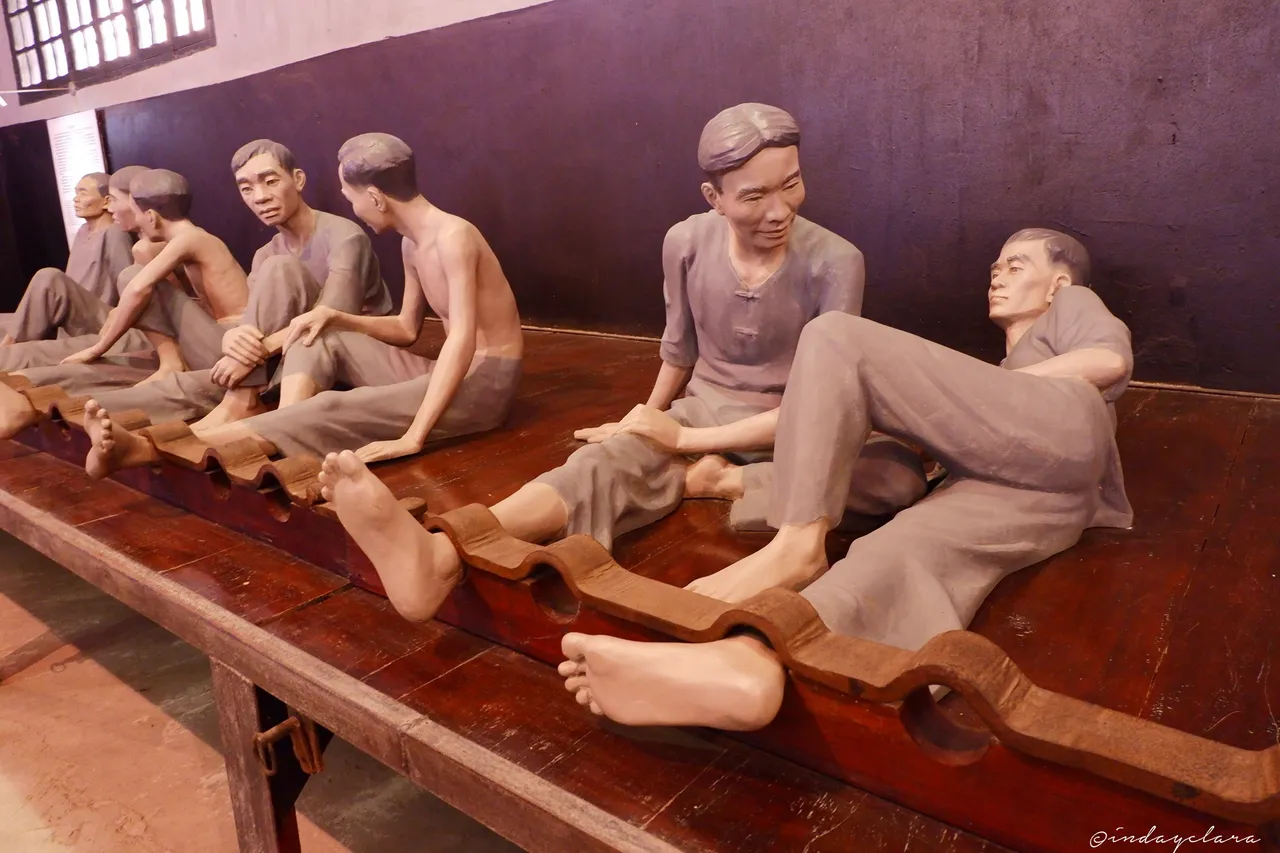
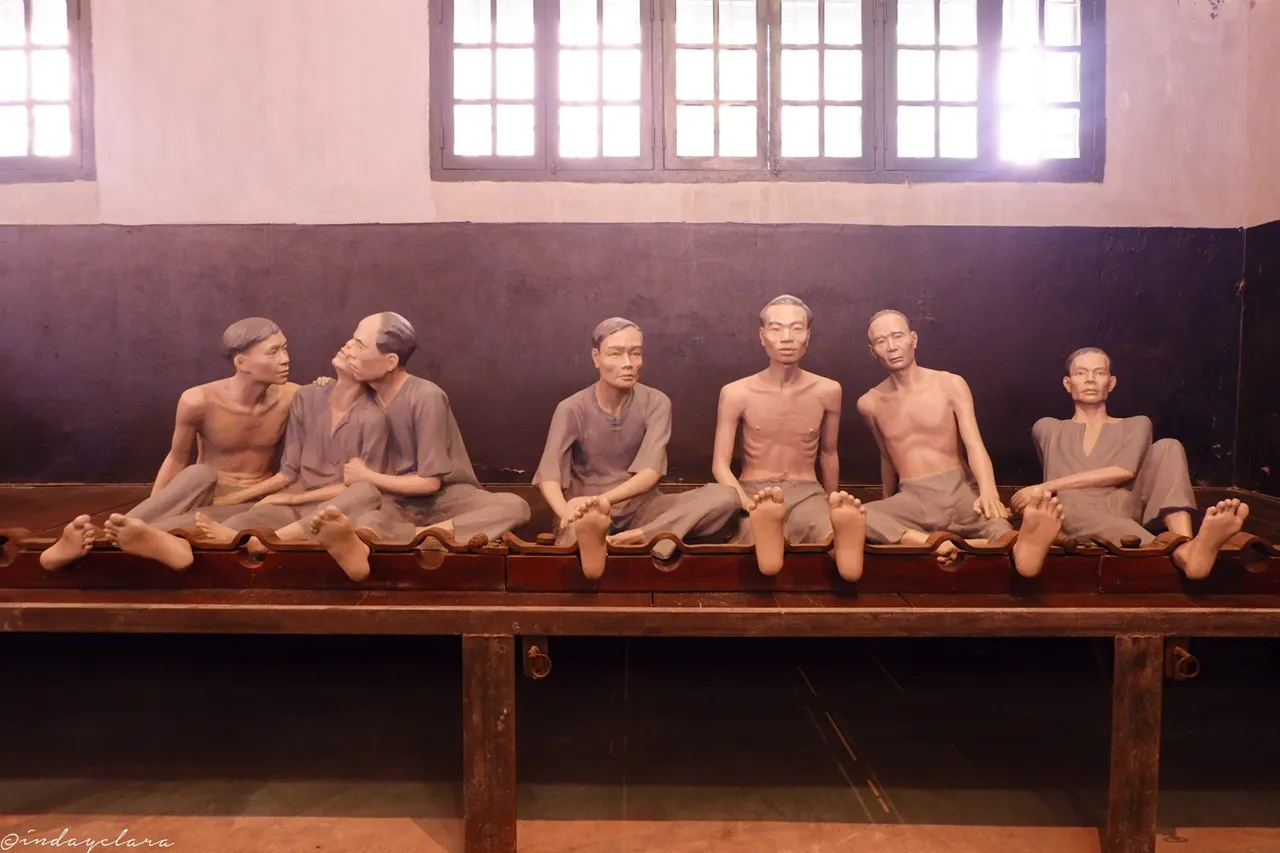
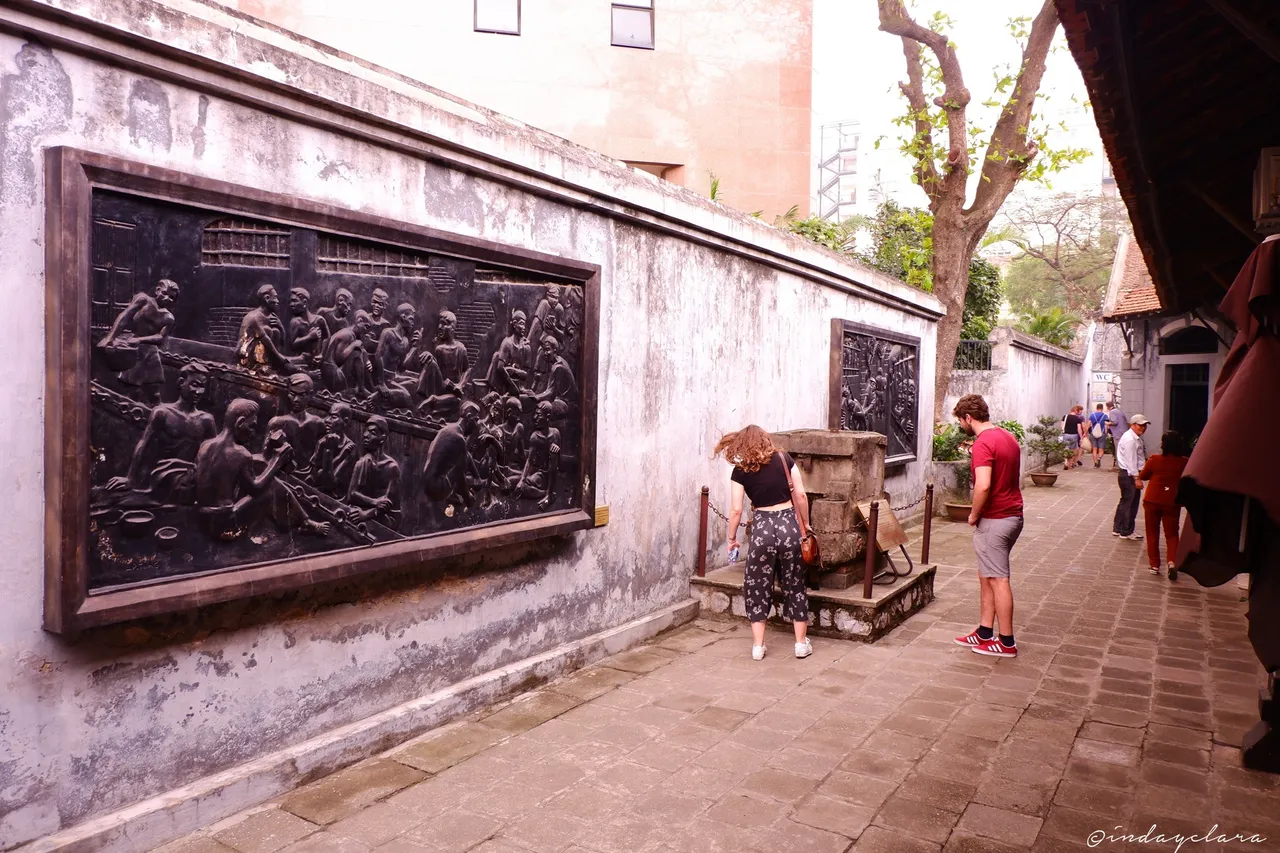
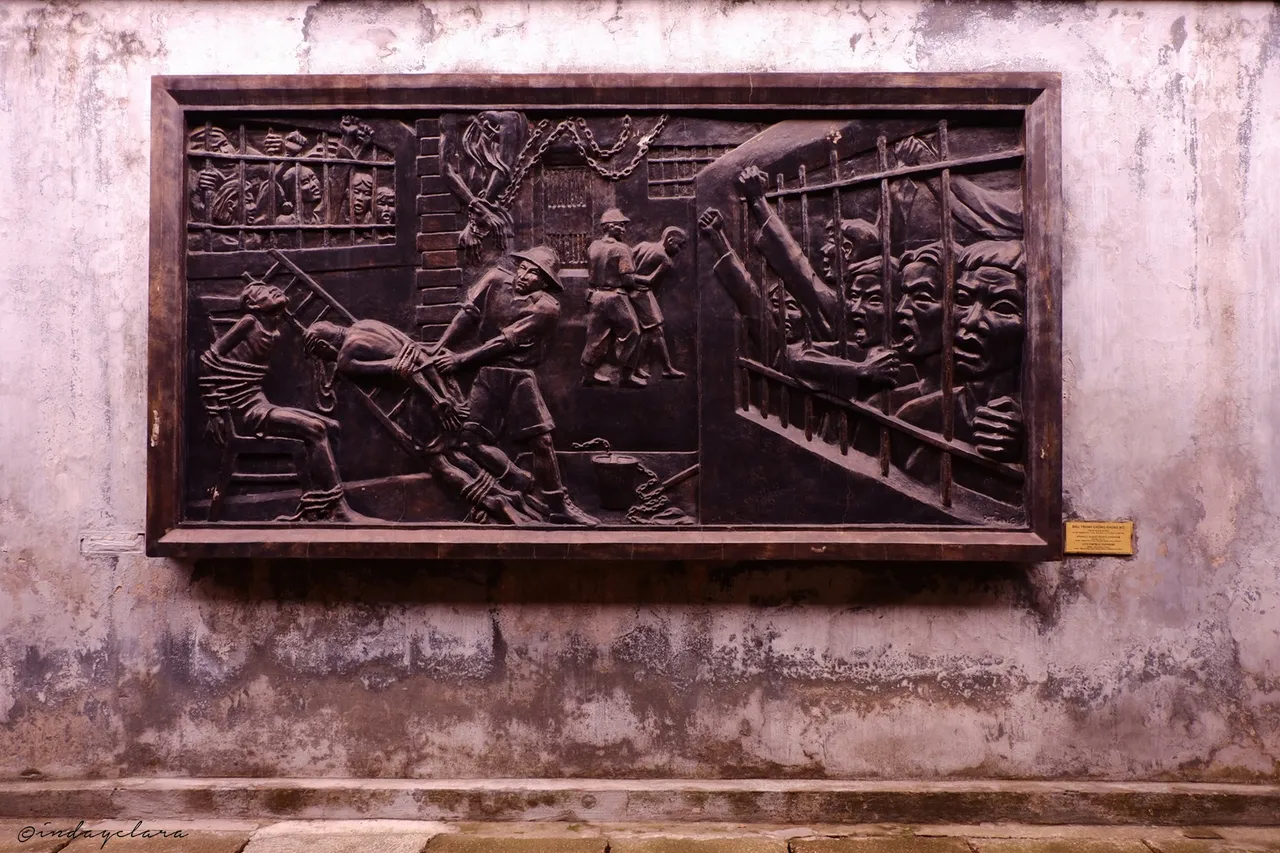
Material: Concrete
Author: Nguyen Phuc Tung
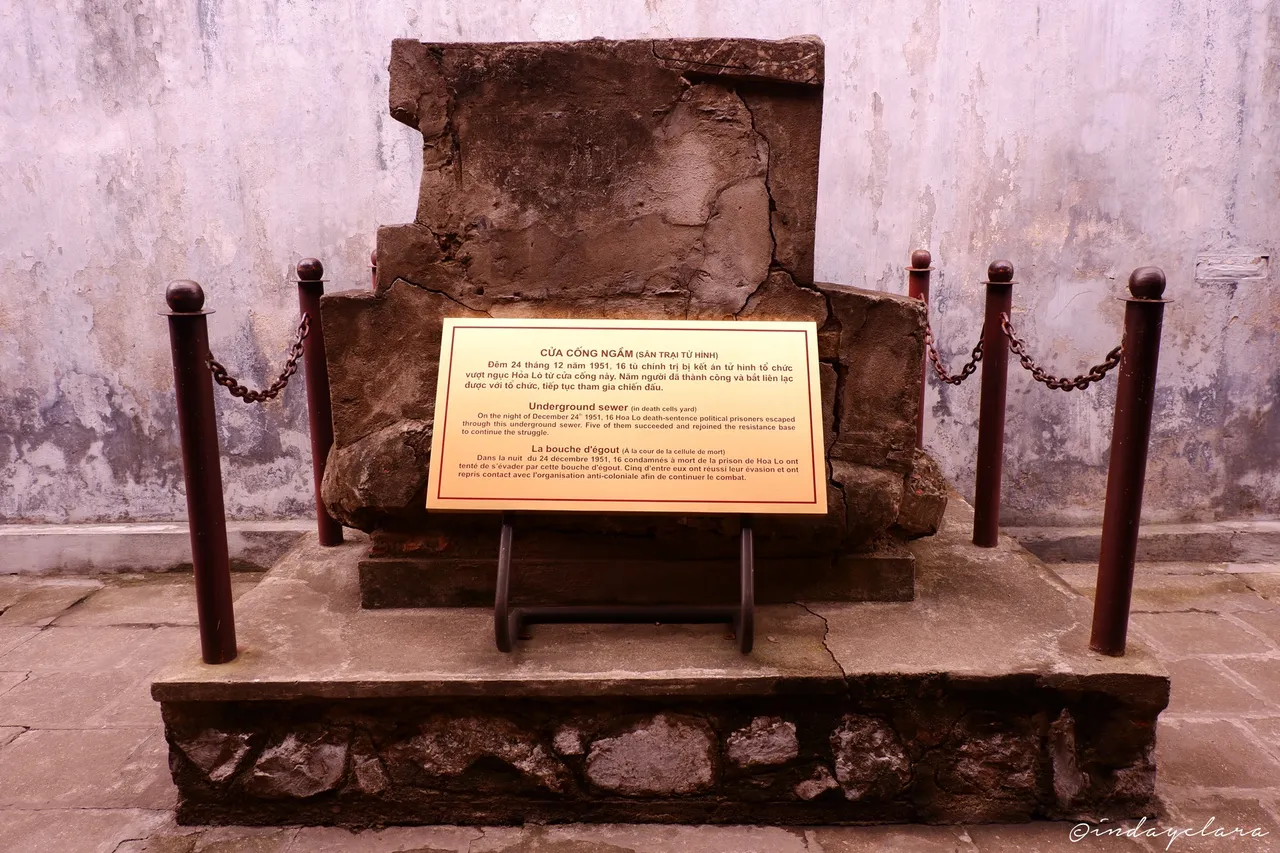
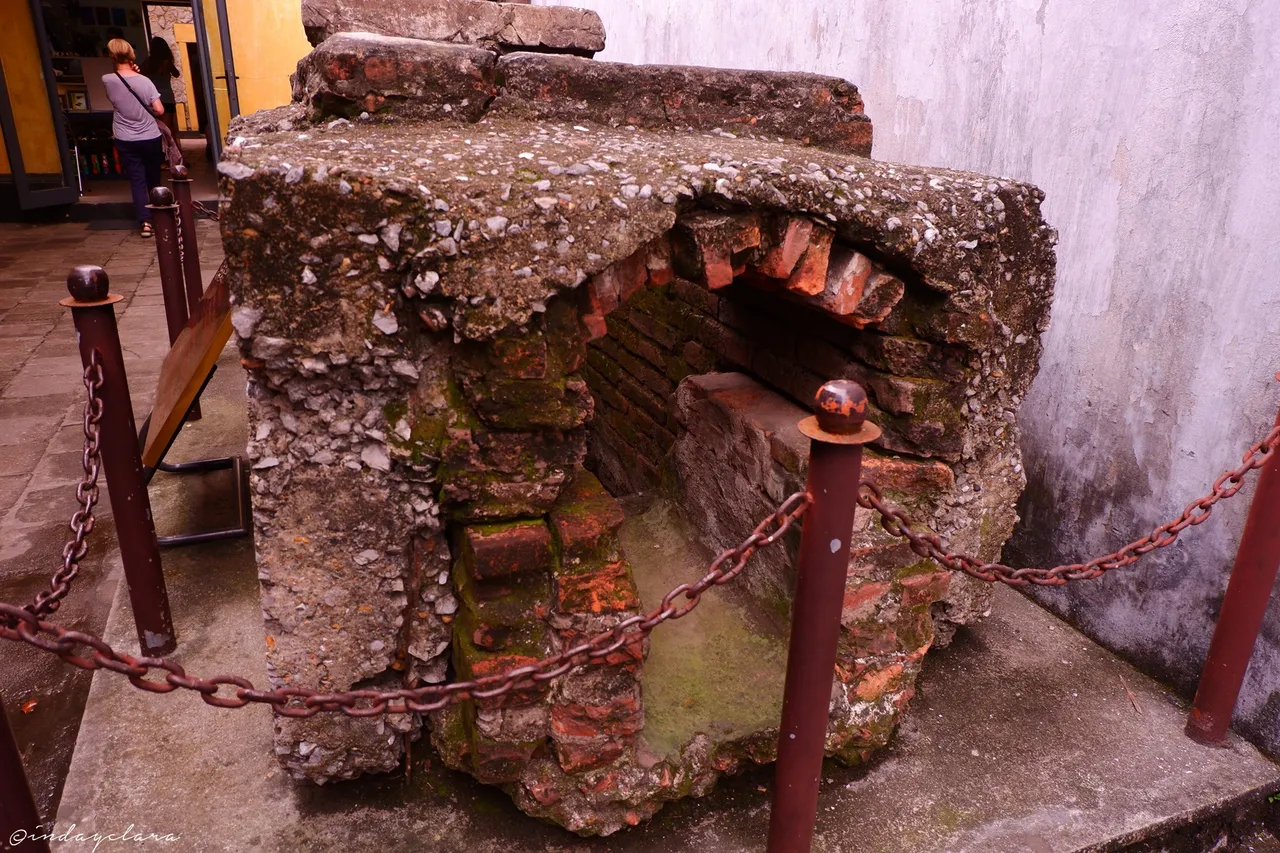
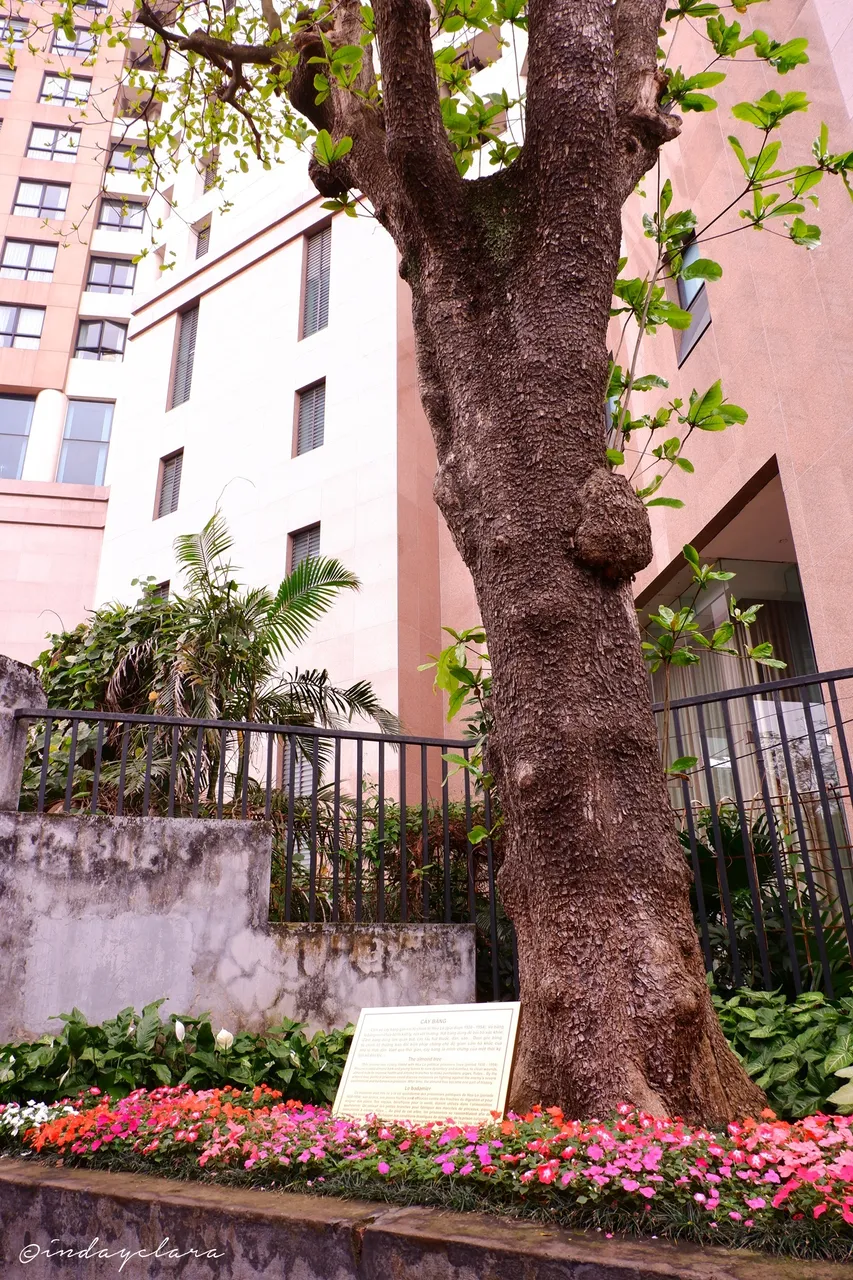
Above: On the night of December 24th 1951, 16 Hoa Lo death sentence political prisoners escaped through this underground sewer. Five of them succeeded and rejoined the resistance base to continue the struggle.
Right: This almond tree closely linked with Hoa Lo political prisoners lives (period 1930-1954). Prisoners used almond bark and young leaves to cure dysentery and diarrhea, to clean wounds, almond nuts to improve health and almond branches to make penholders, pipes, flutes… By the almond tree, political prisoners could discuss measures on fighting against the enemy’s severe confinement and barbarous repression. After time, the almond tree became one part of history.
Bottom: Iron grille of underground sewer at point of escape
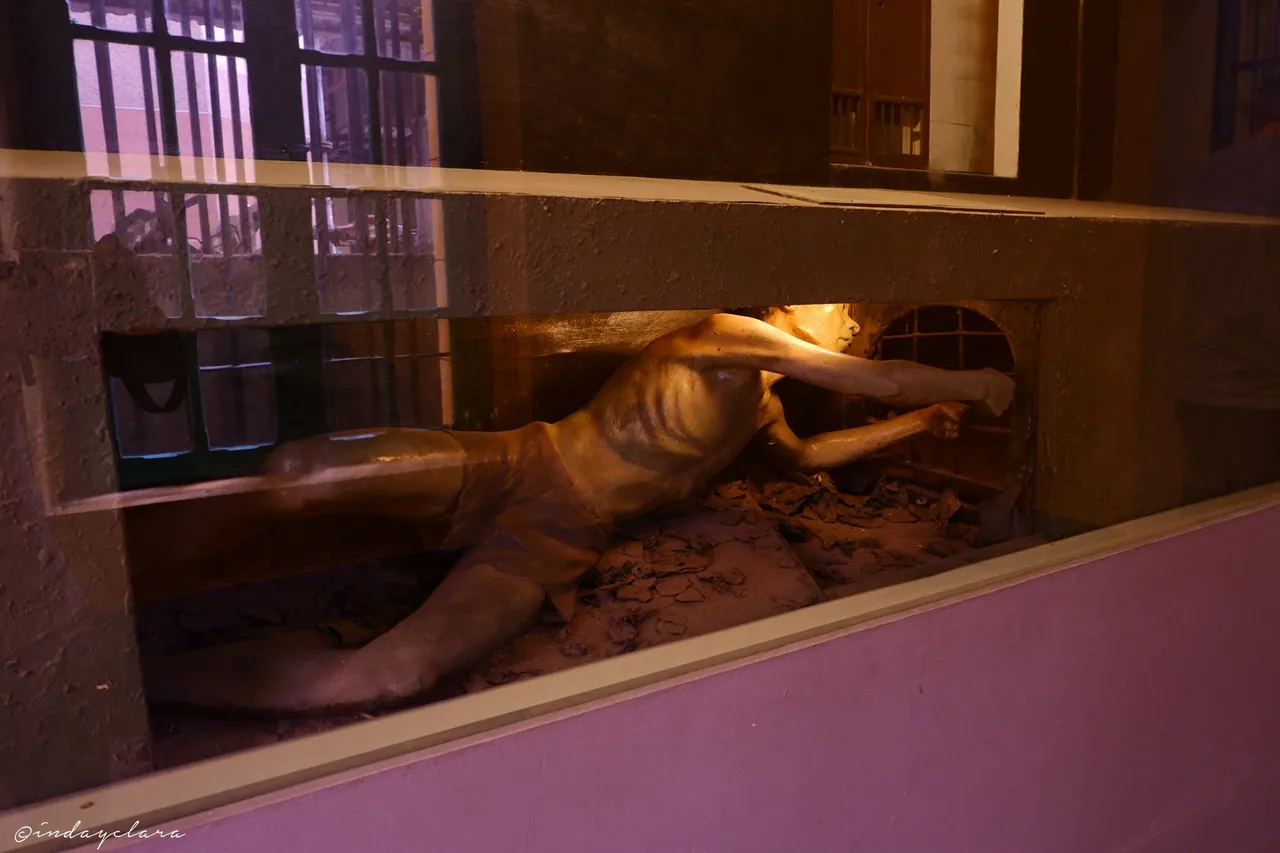
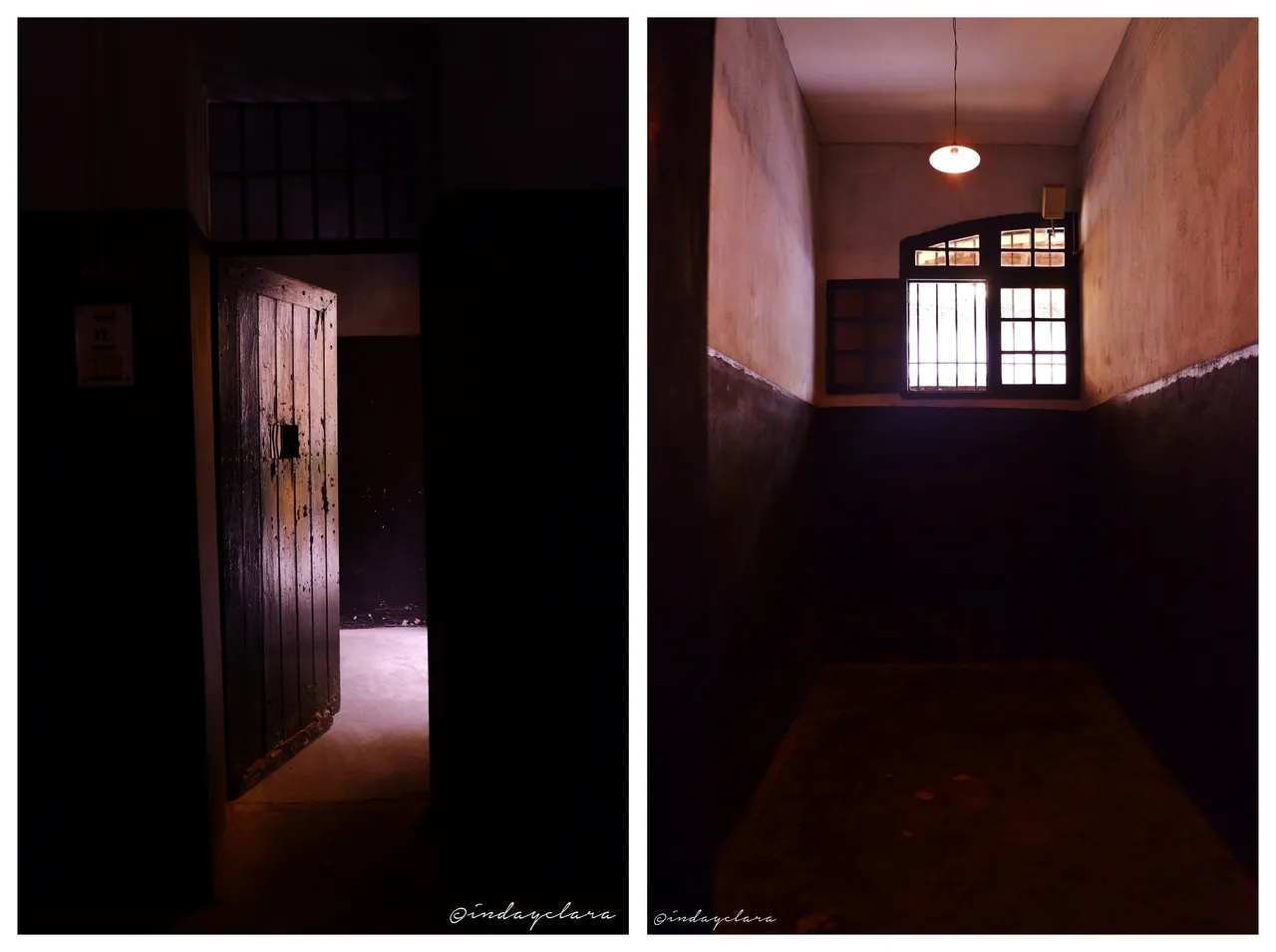
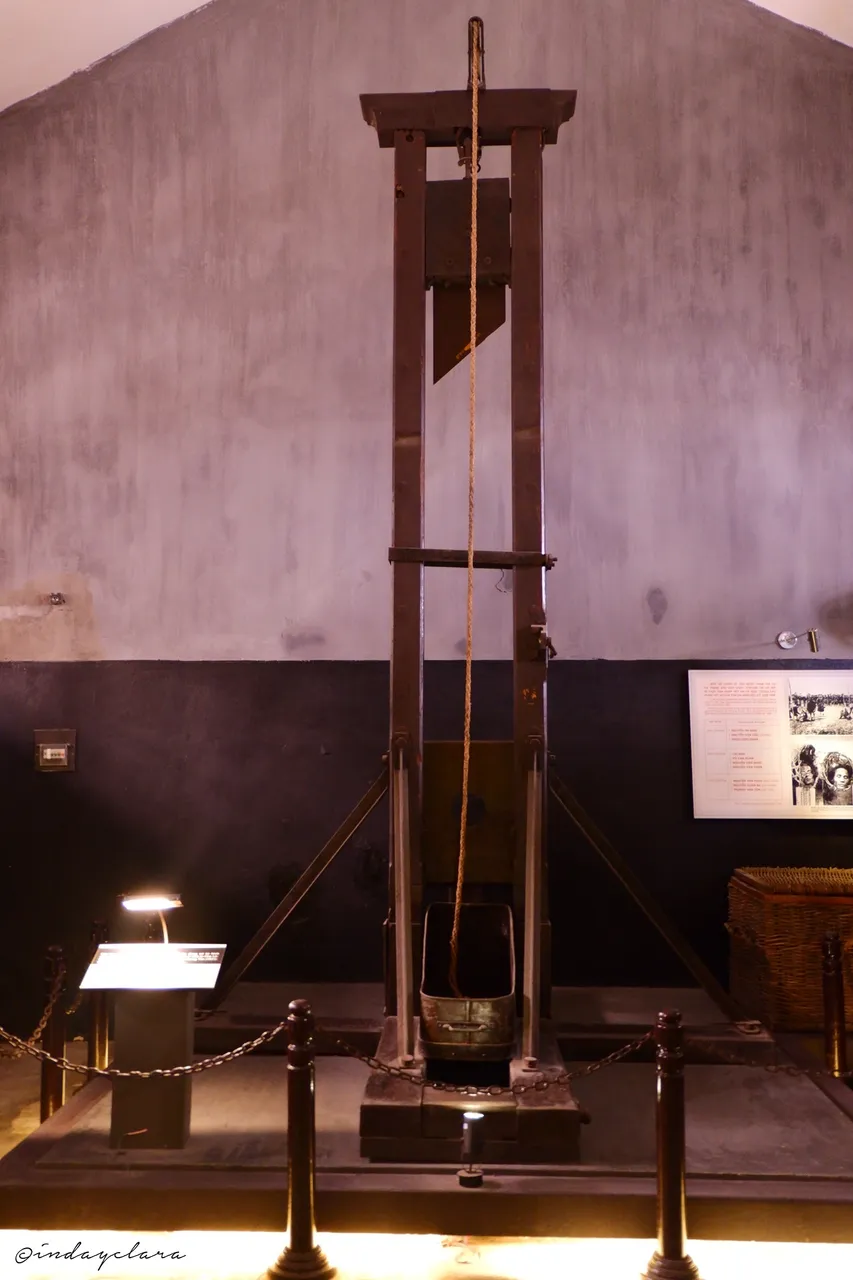
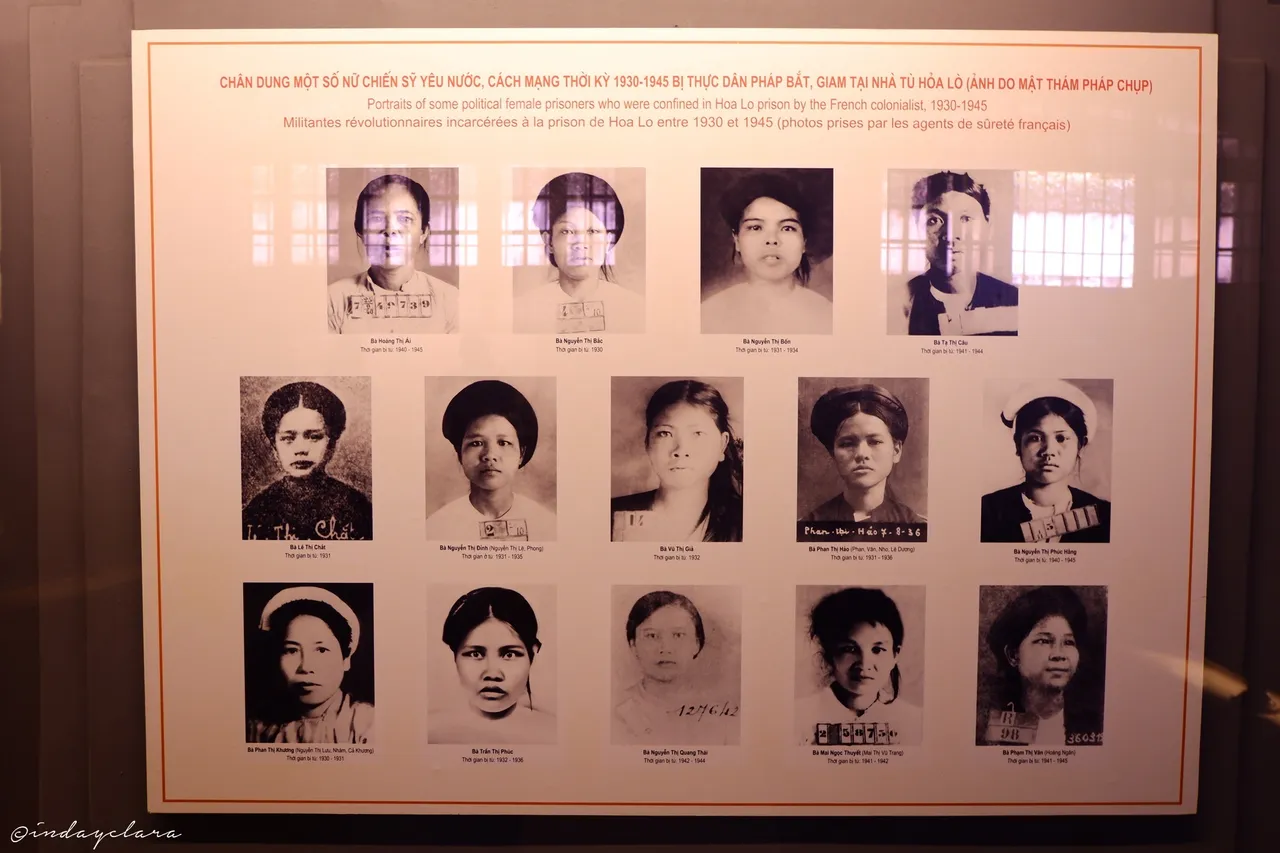
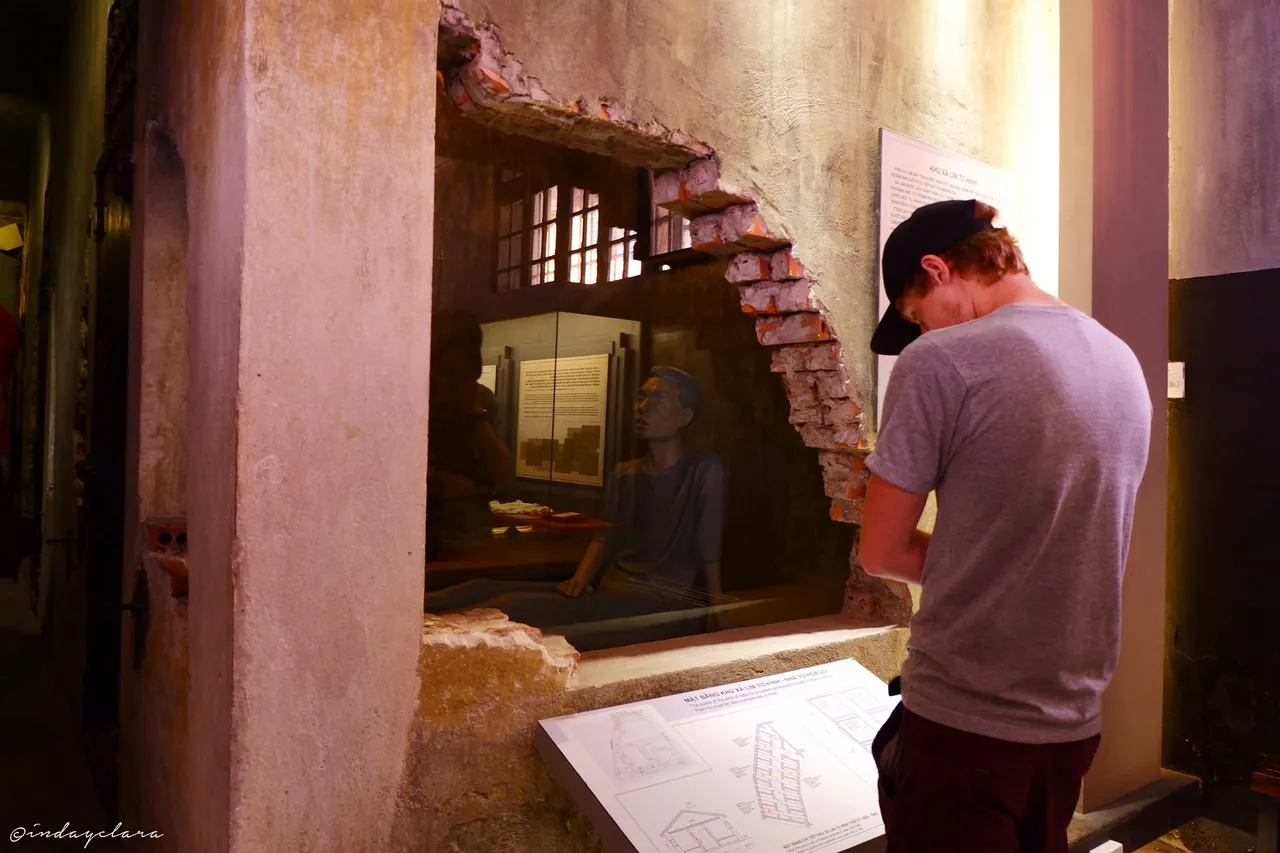
Death Row Cells
These cells were completely isolated from other cells of Hoa Lo Prison to prevent death row inmates from communicating with the outside. The cell was built solidly with the wall o.4m meters thick, 3 meters high and area of each room is 5 sq. m. Both interior and exterior walls were painted with black tar which made people feel gloomy and cold. Prisoners here were shackled all day long, not even freed to use the toilet. The cell door was opened just twice each day for jail guards to bring meals and water to the death row inmates.
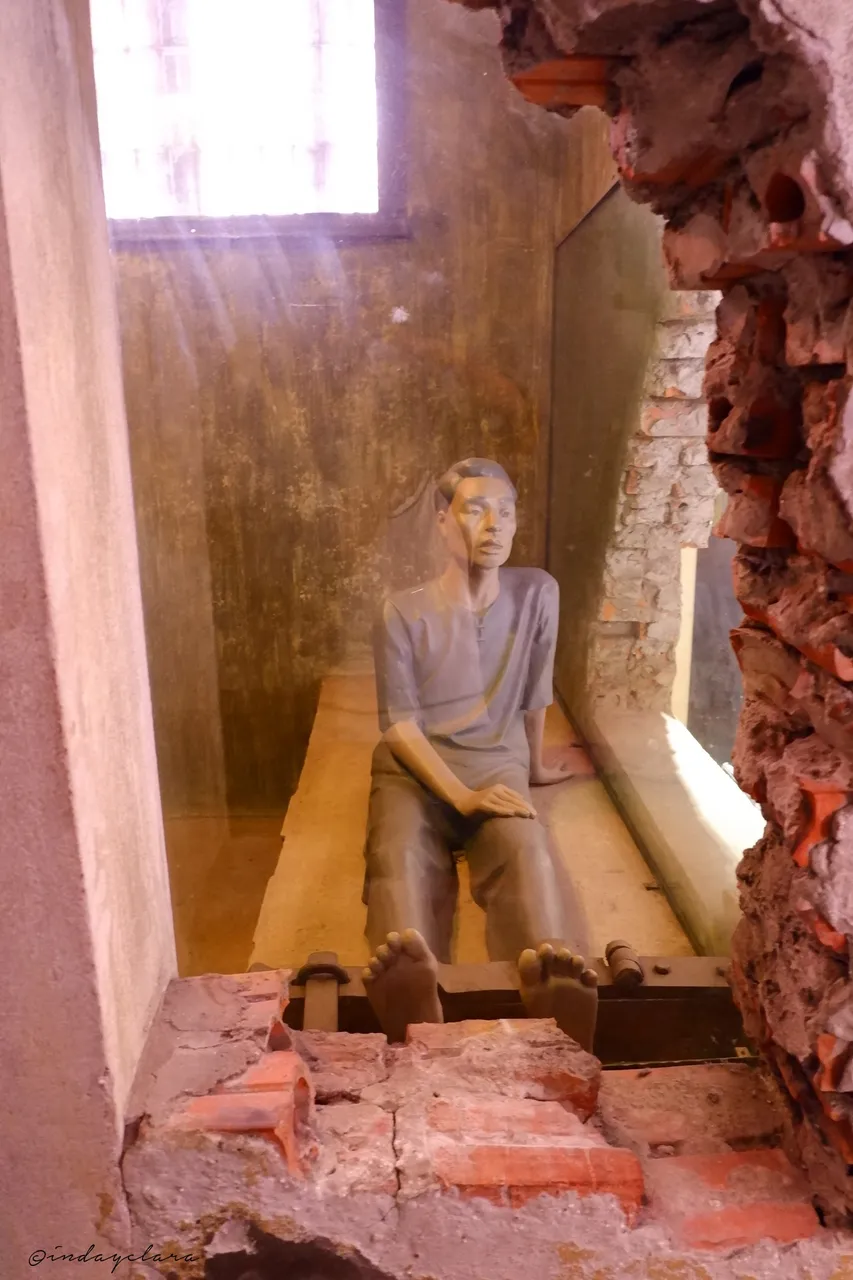
According to the prison regulations, prisoners who were sentenced to death were detained here for a minimum of 10 months from the day of being sentenced at Criminal Court. During this time, prisoners could lodge an appeal or claim for sentence reduction. However, to eliminate some death row inmates, particularly the ones whom the French considered dangerous, these death row inmates were executed after only 2 to 3 days from the day of sentence.
In spite of living in the cell and having to deal with the closeness of death, the Vietnamese communists retained the will to fight. They wrote books, compiled materials to broadcast national revolution and, composed poems revealing spirits of optimism, patriotism, devotion and contribution to national liberation revolution
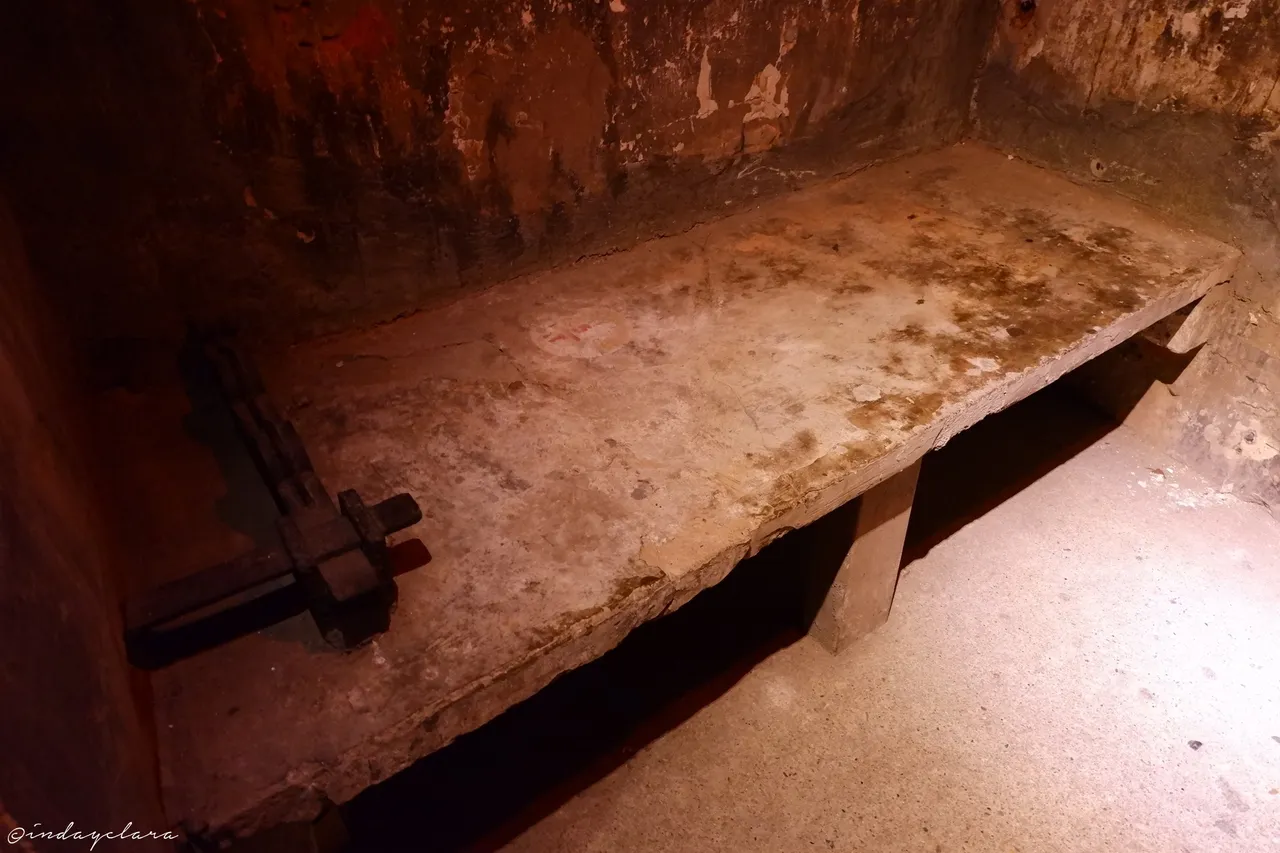
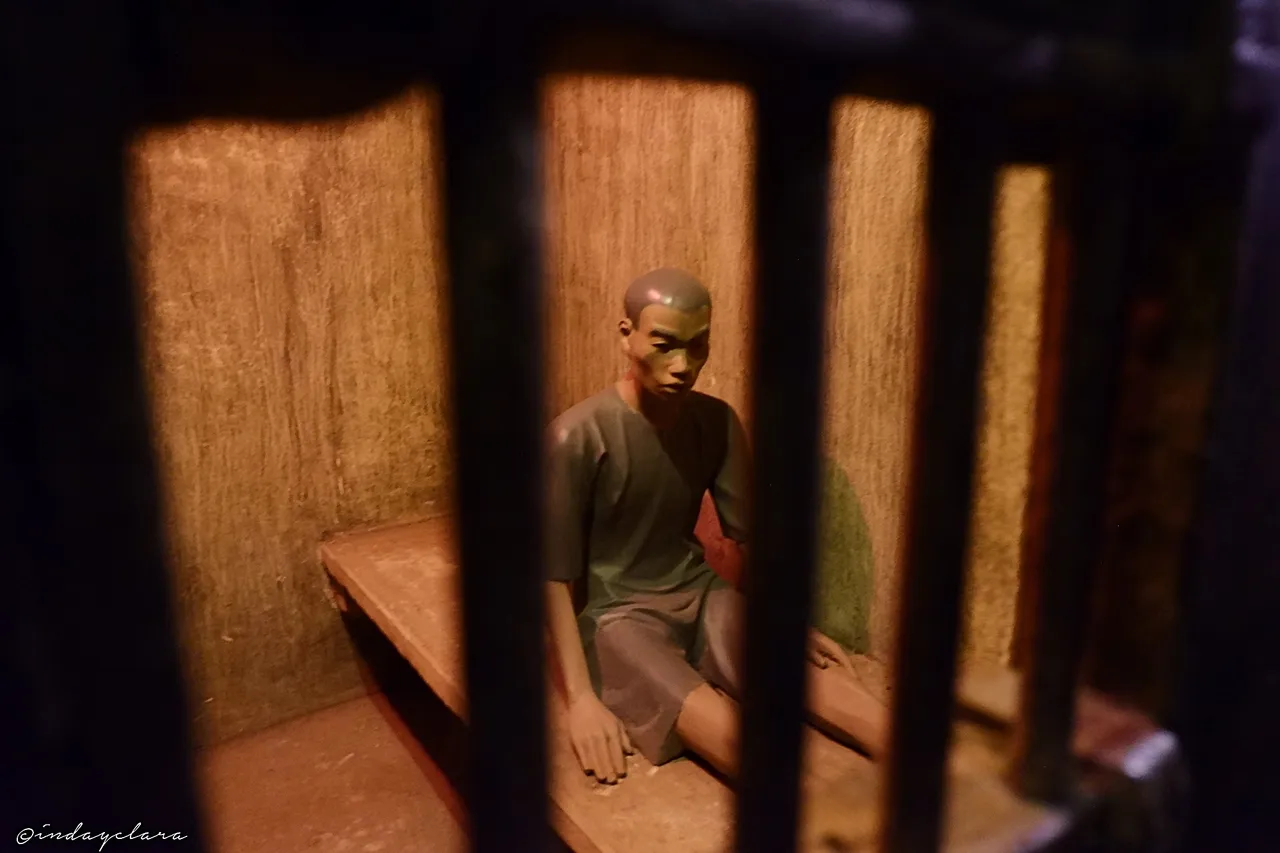
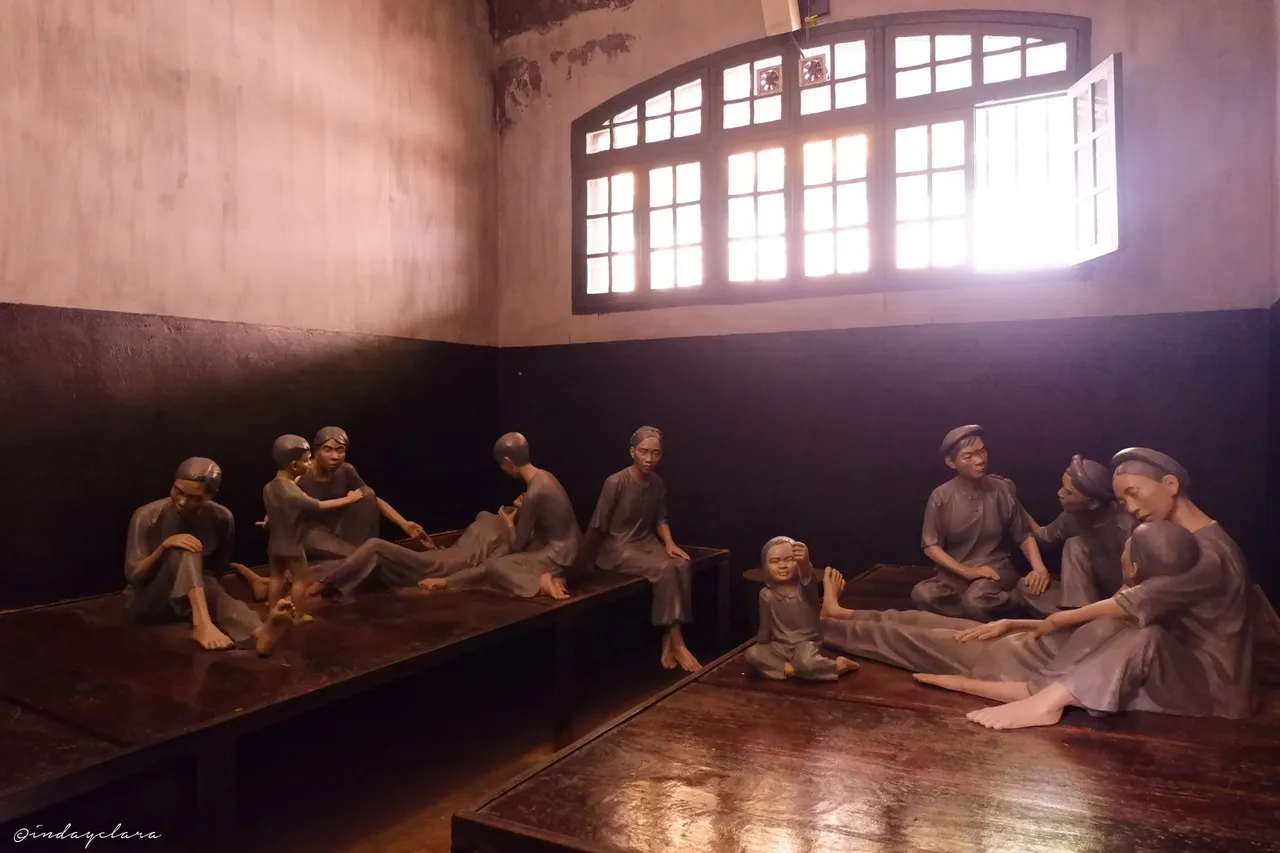
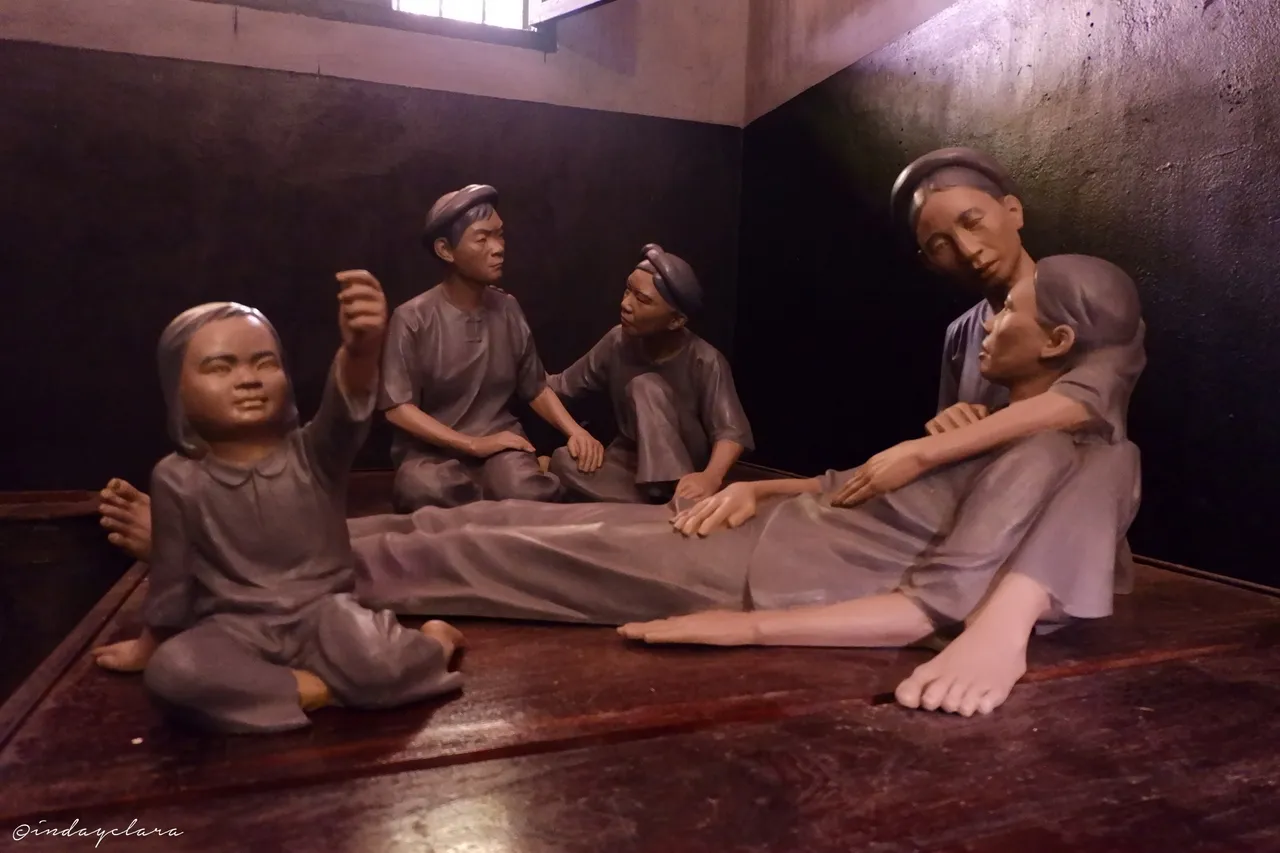
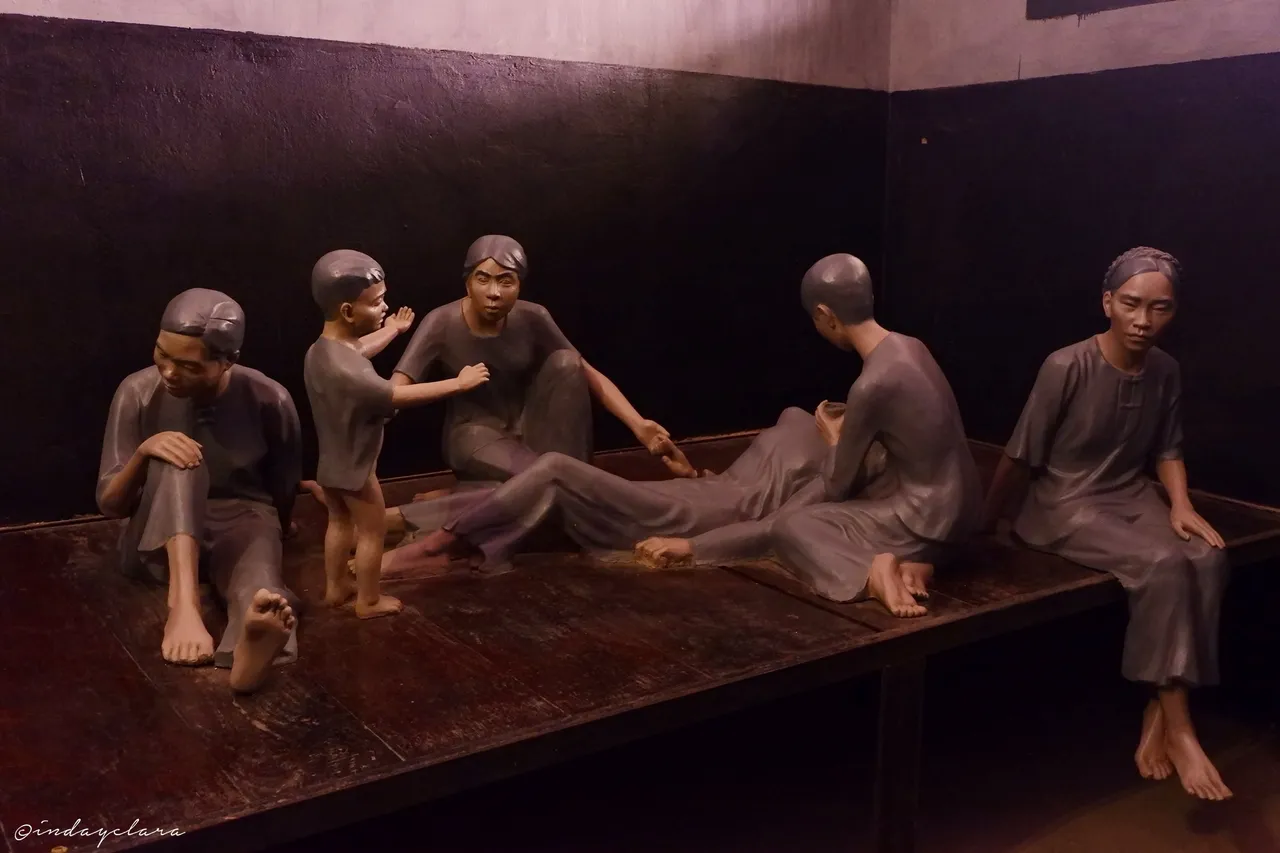
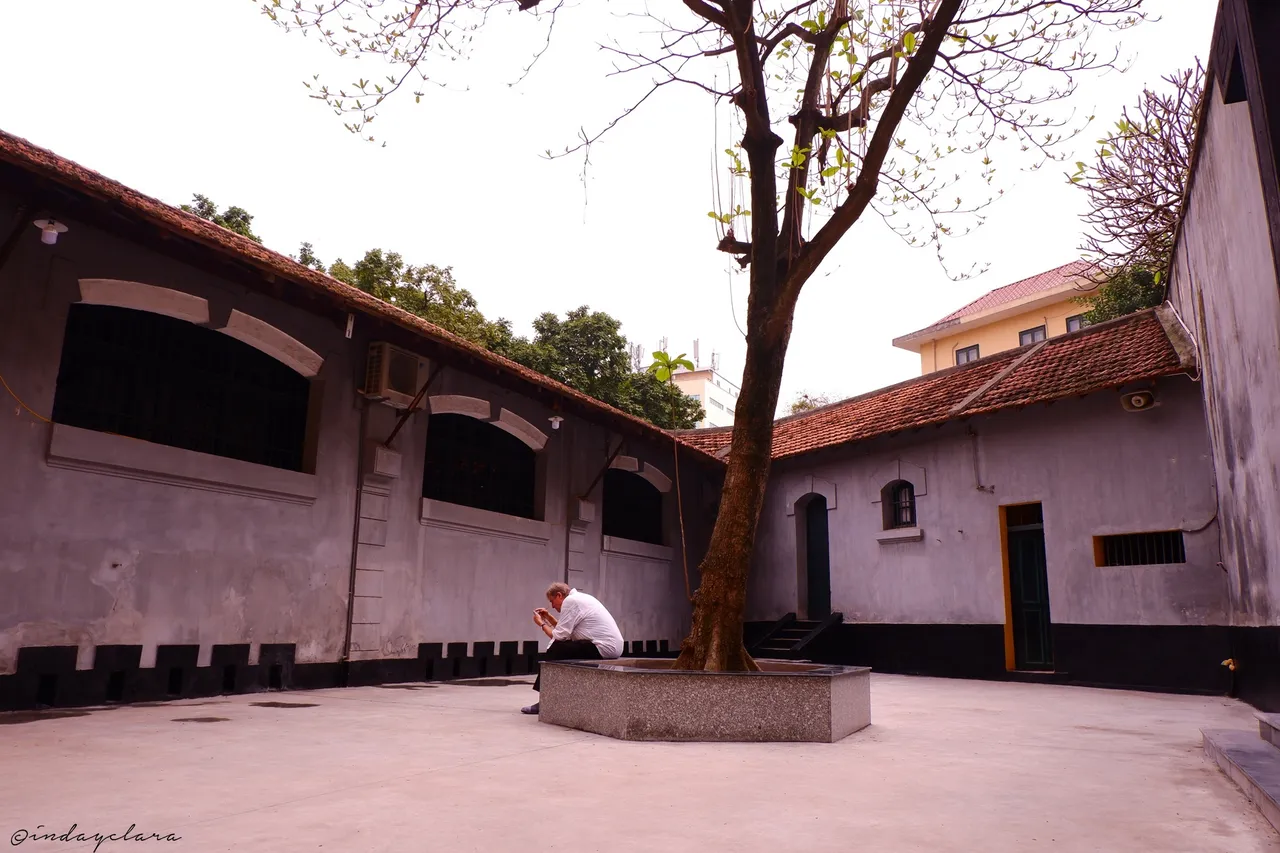
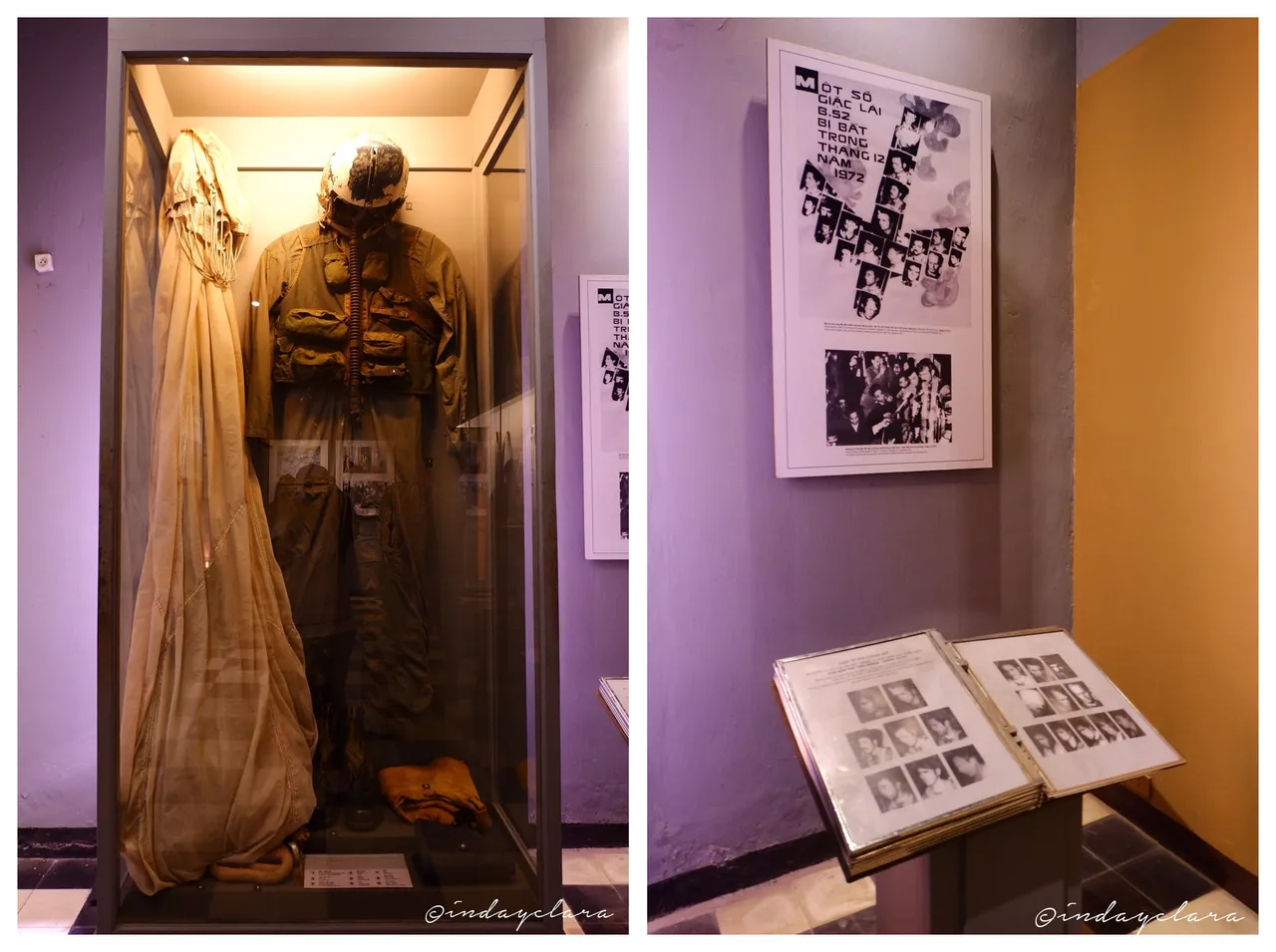
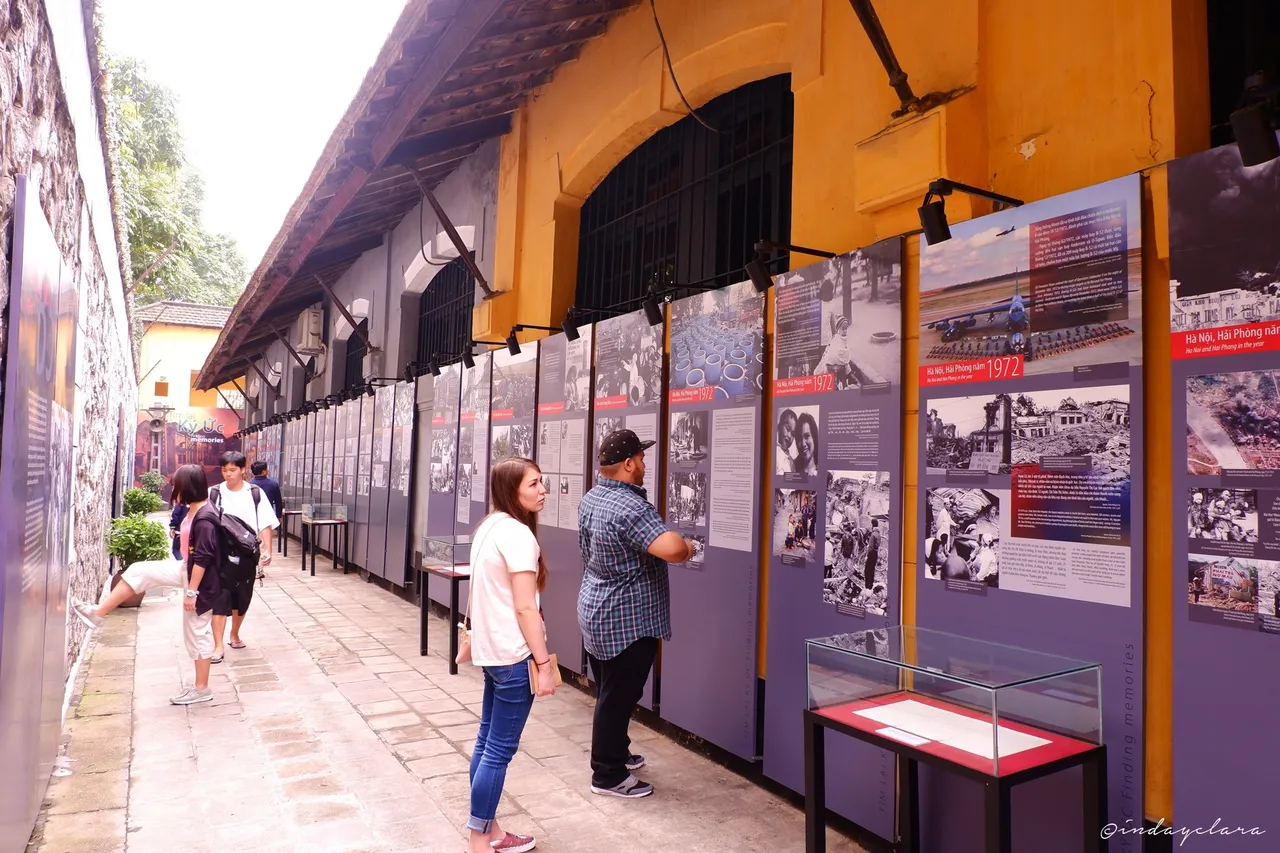
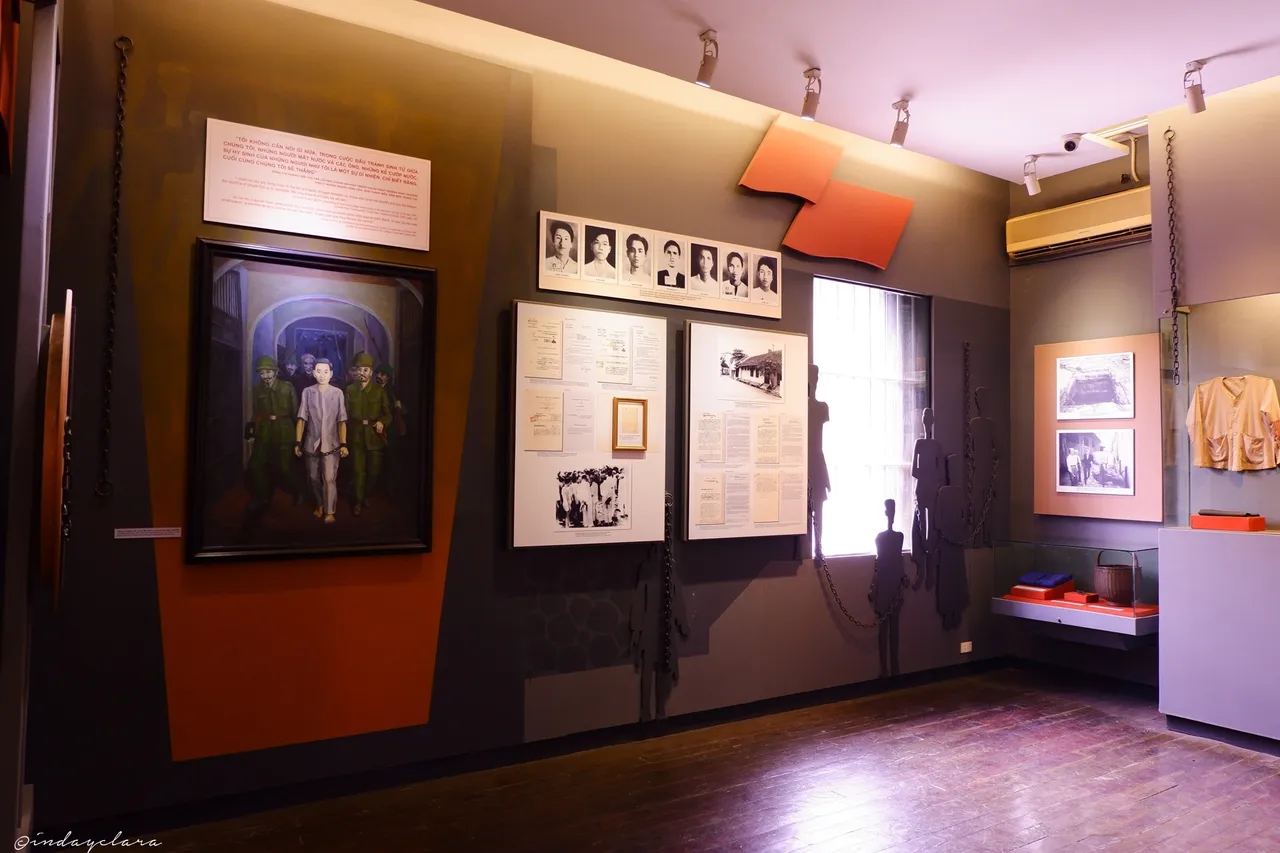
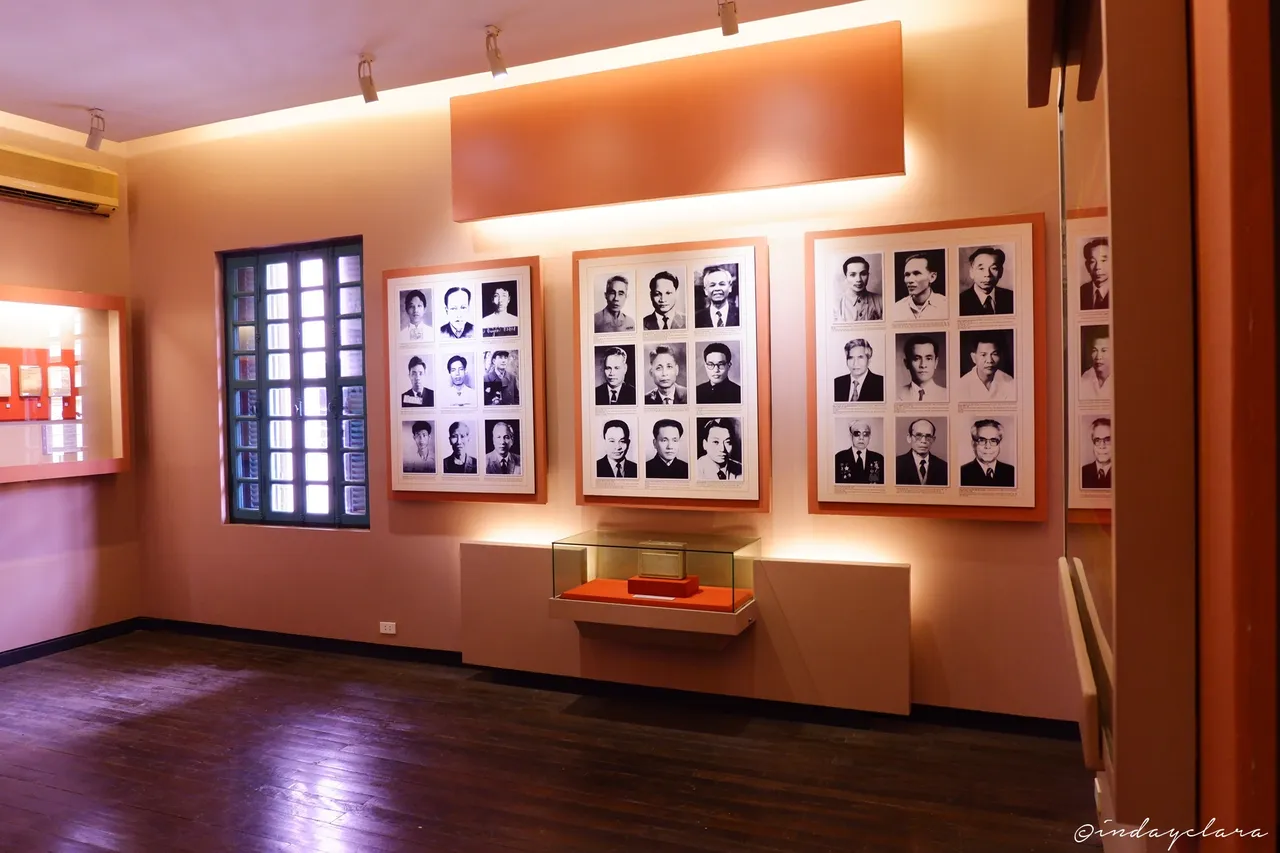
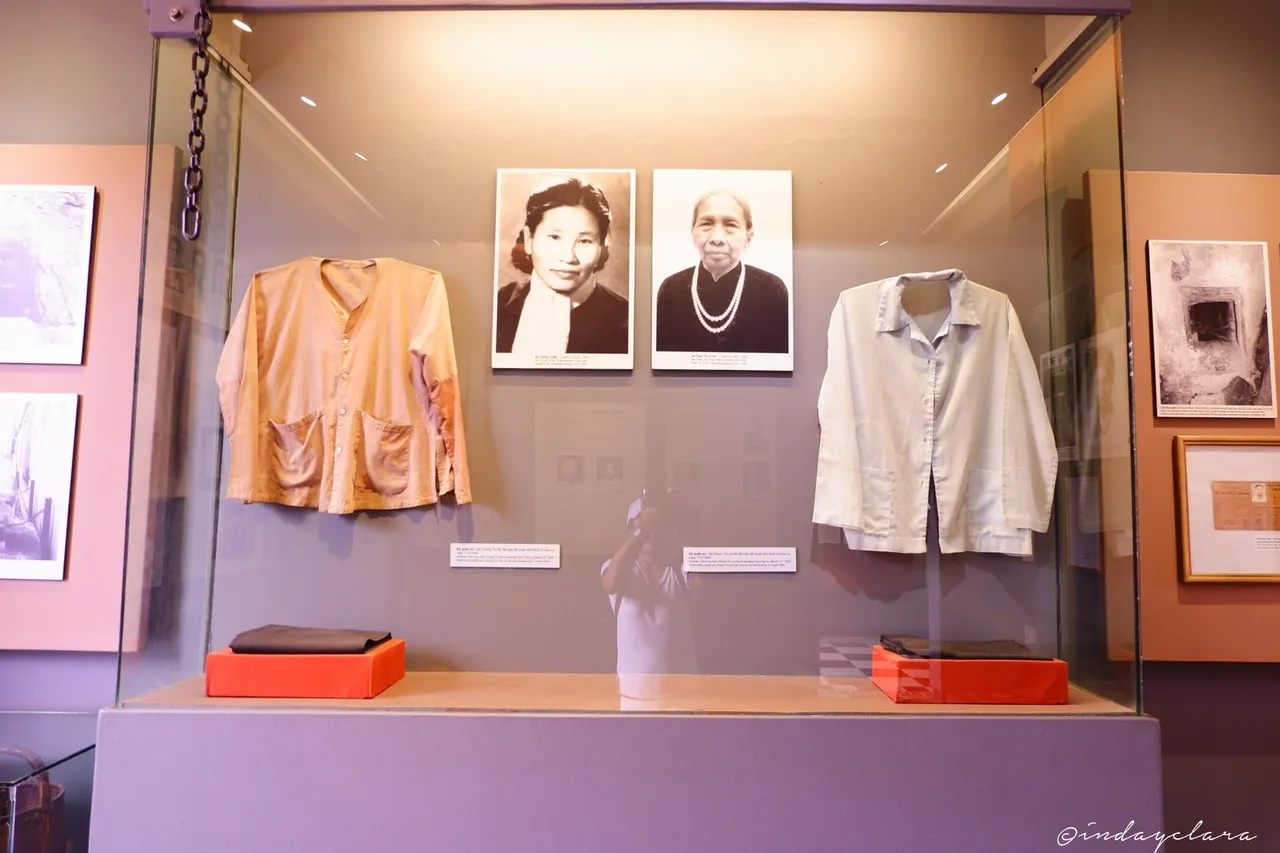
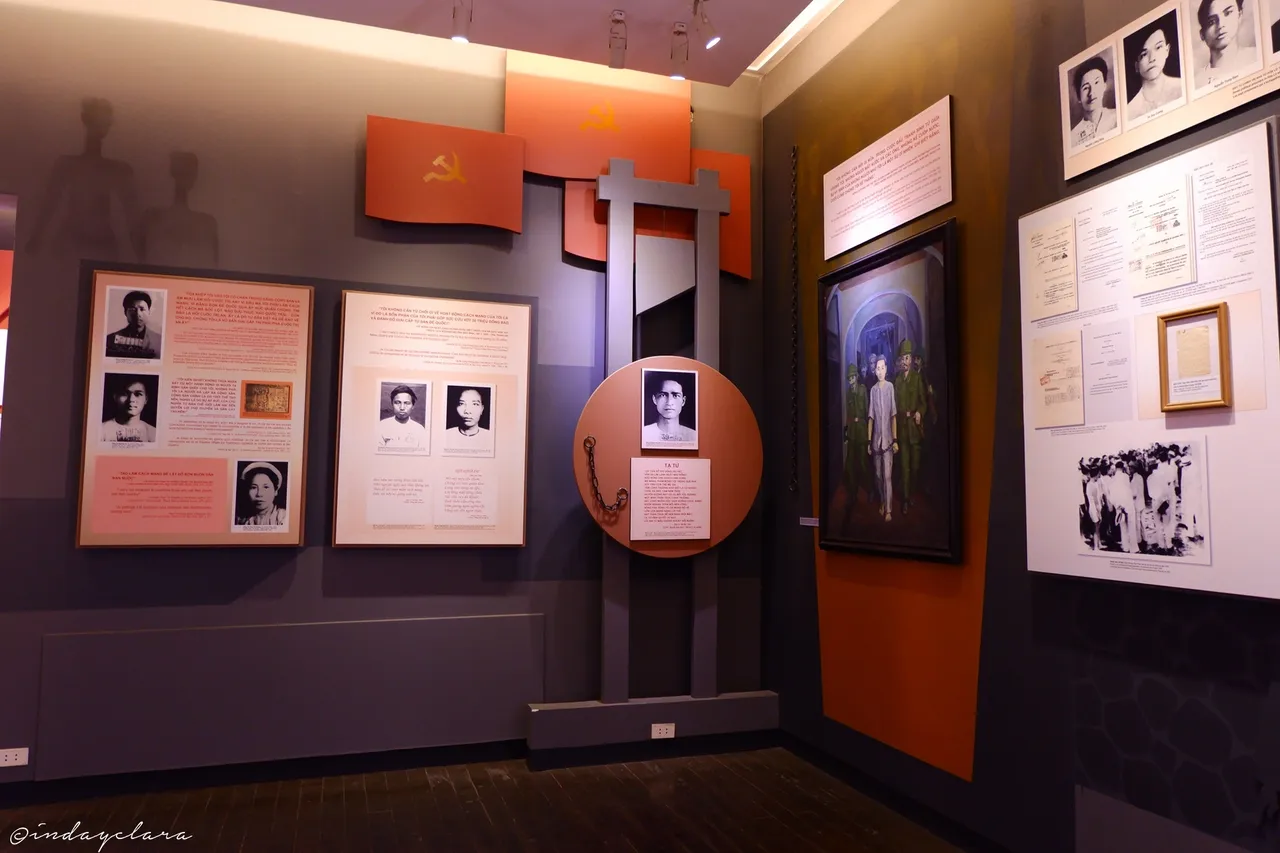
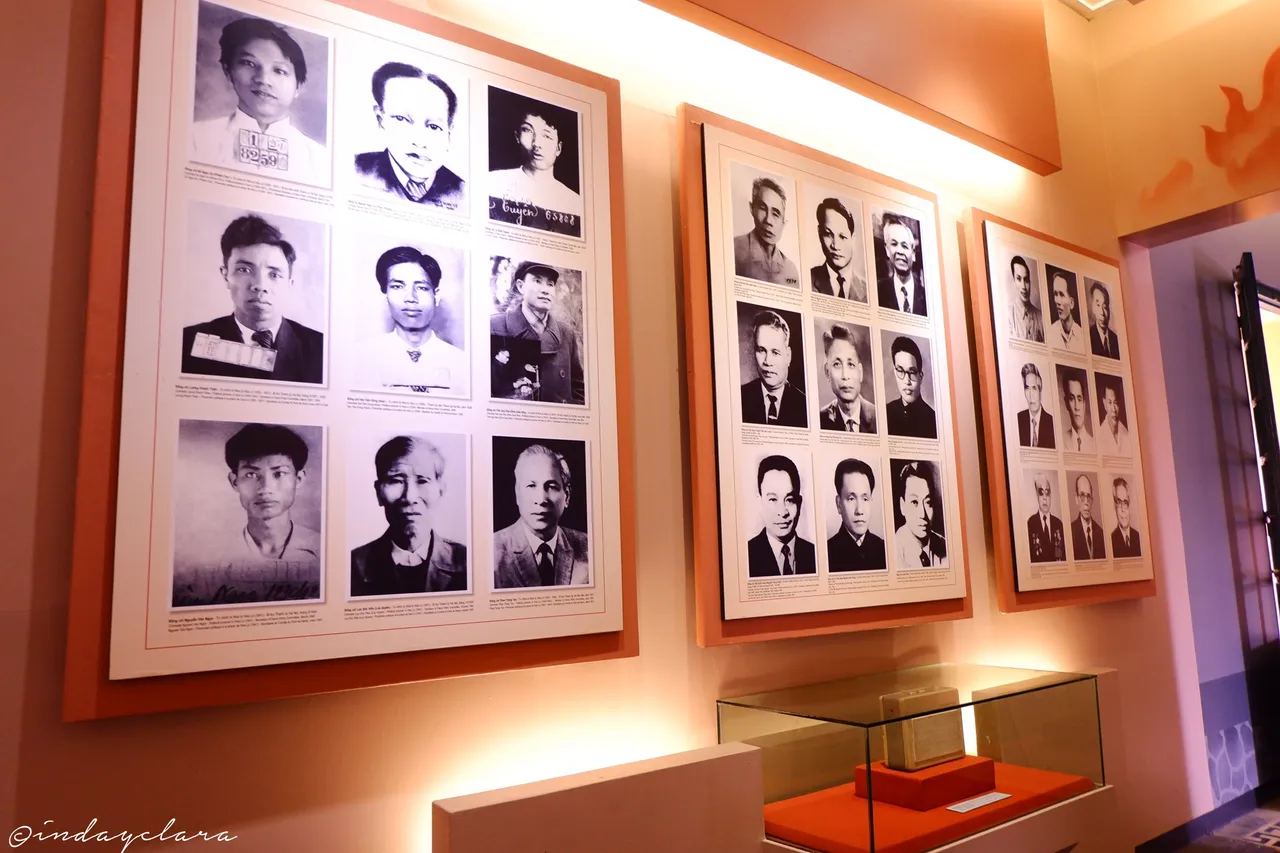
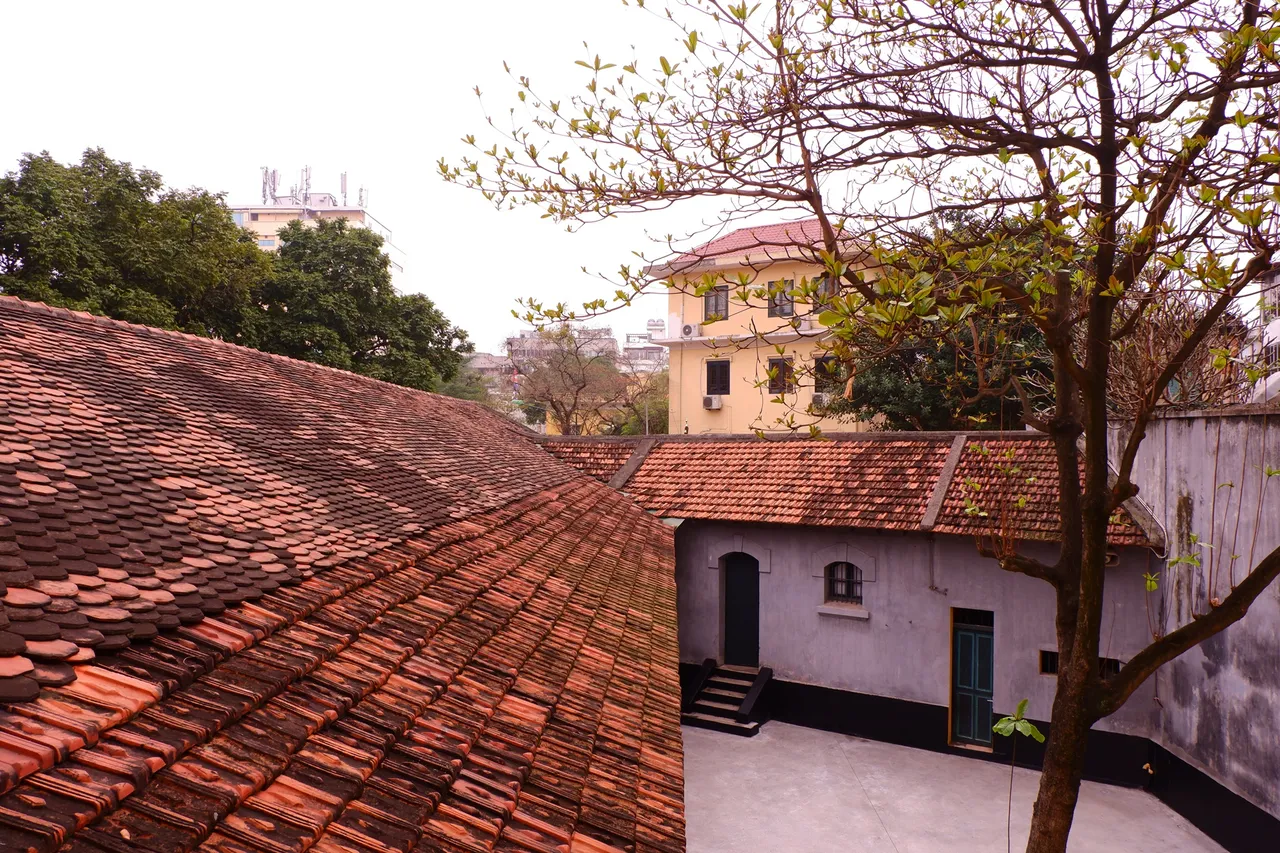
Final thoughts about the Hoa Lo Prison:
I felt eerie, gloomy and kind of sad going through the remnants of the prison. It made me realize that life during the colonial period was really tough especially for those who fought for one's independence and freedom.
Opening Hours: Daily 8:00am - 5:00pm closed during lunch breaks 11:30am - 1:30pm
Ticket Price: 30,000 VND
Location: Hoa Lo Street